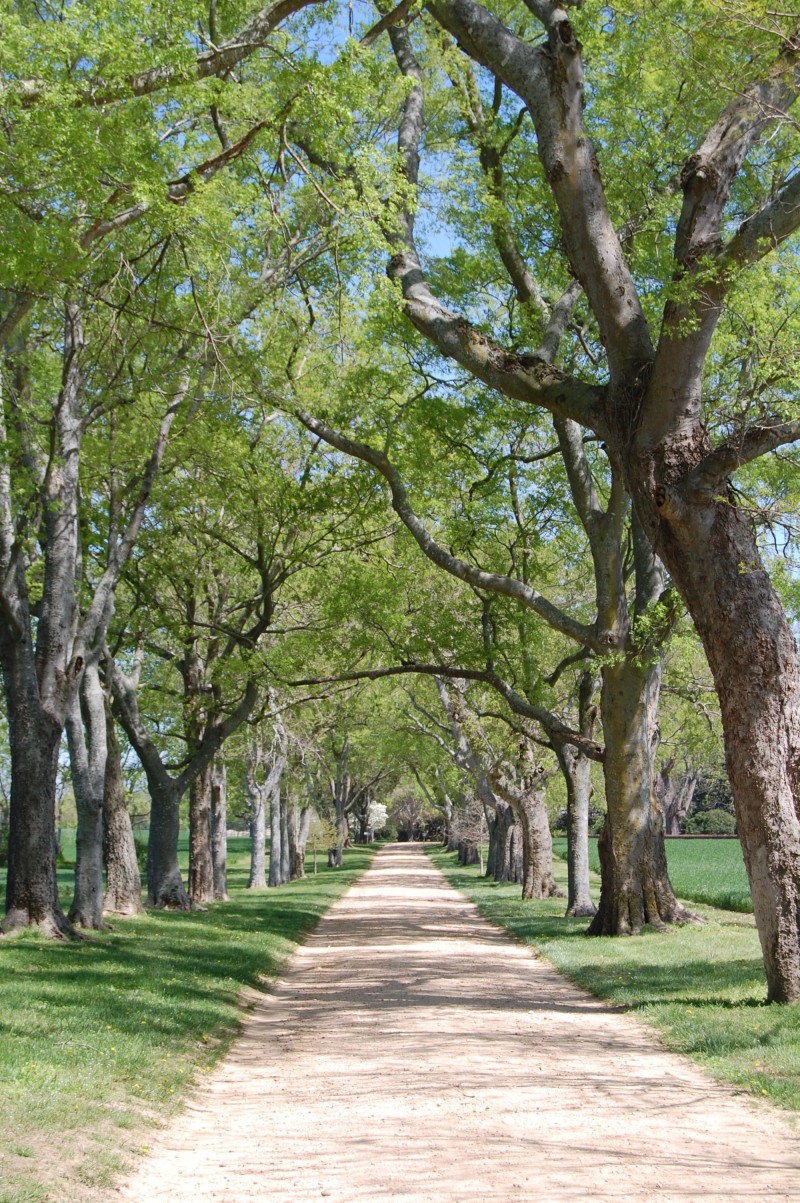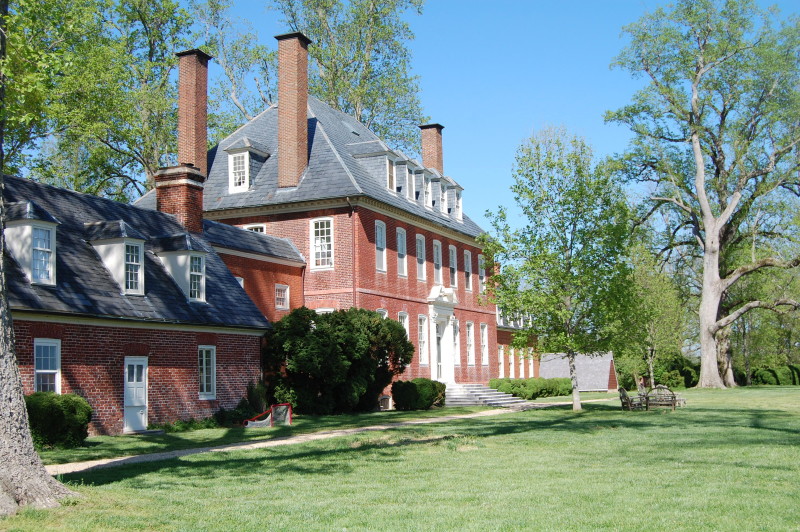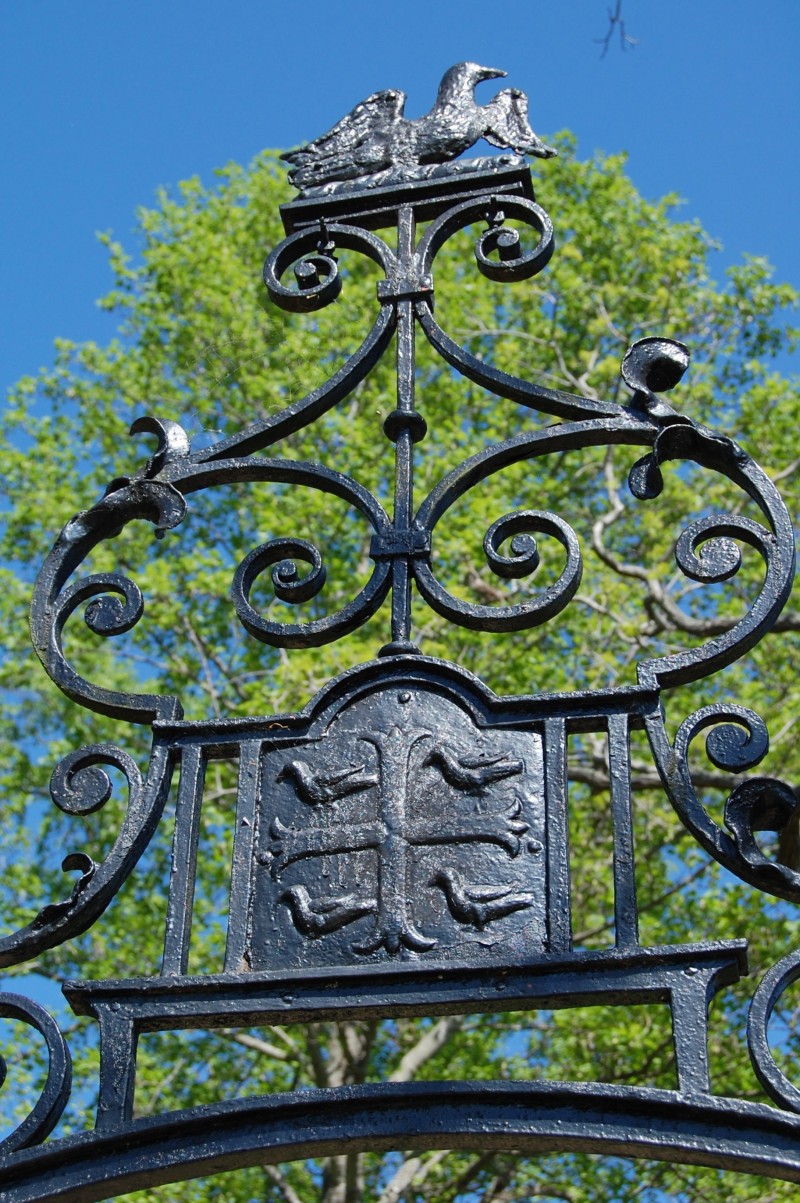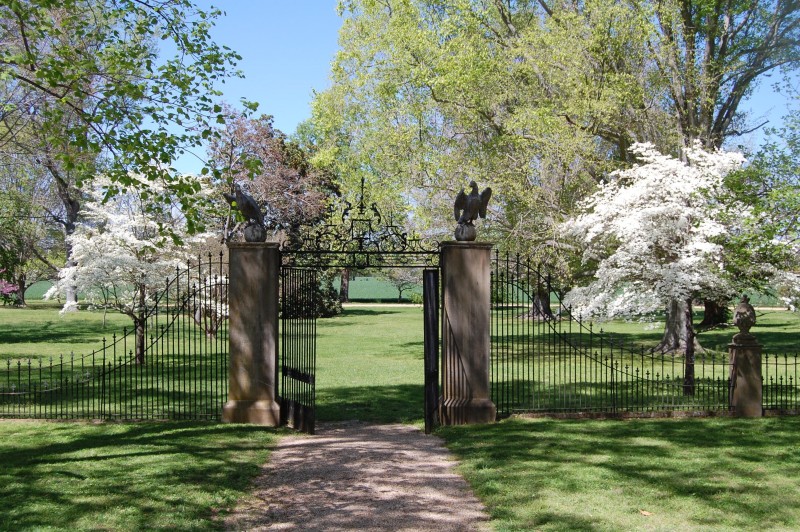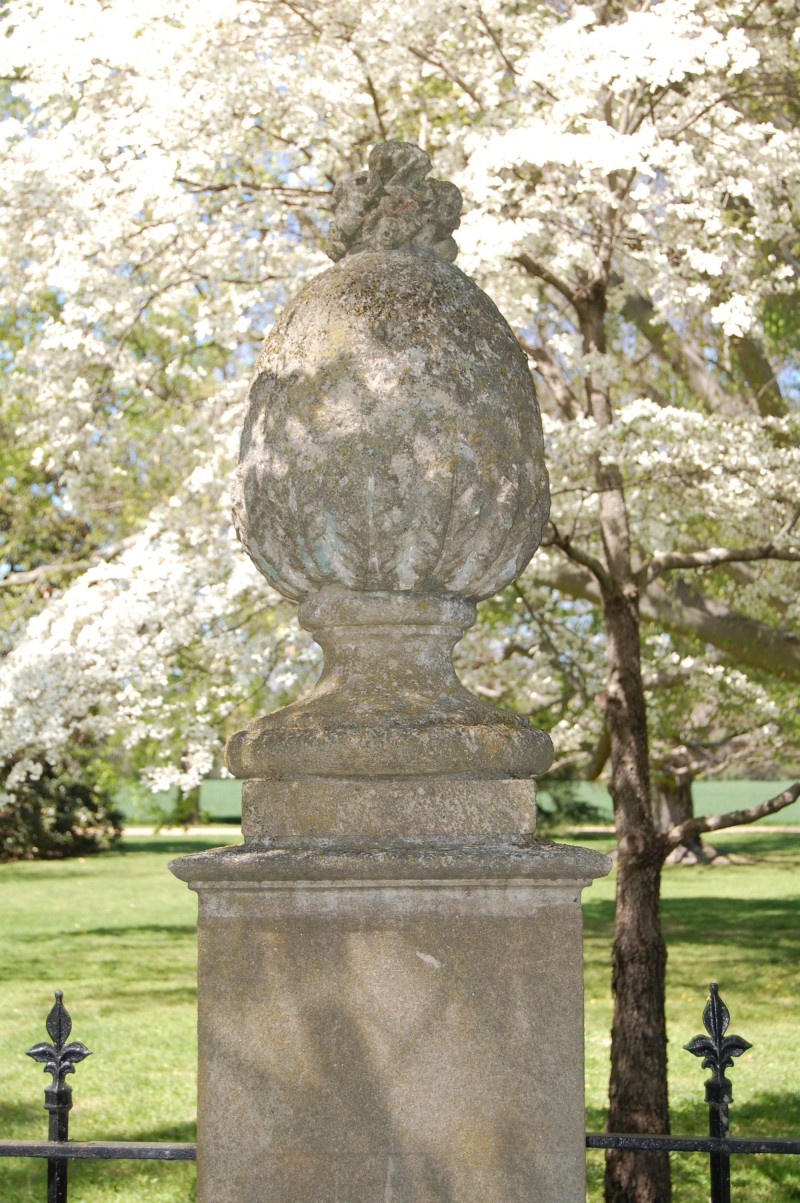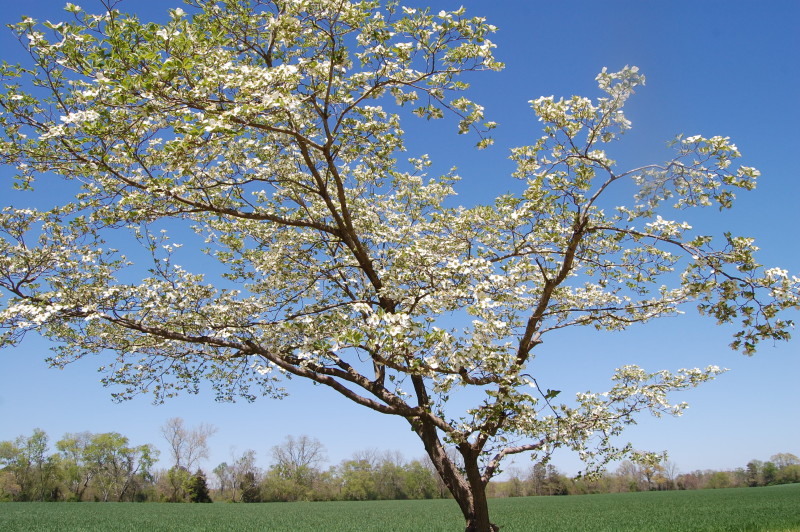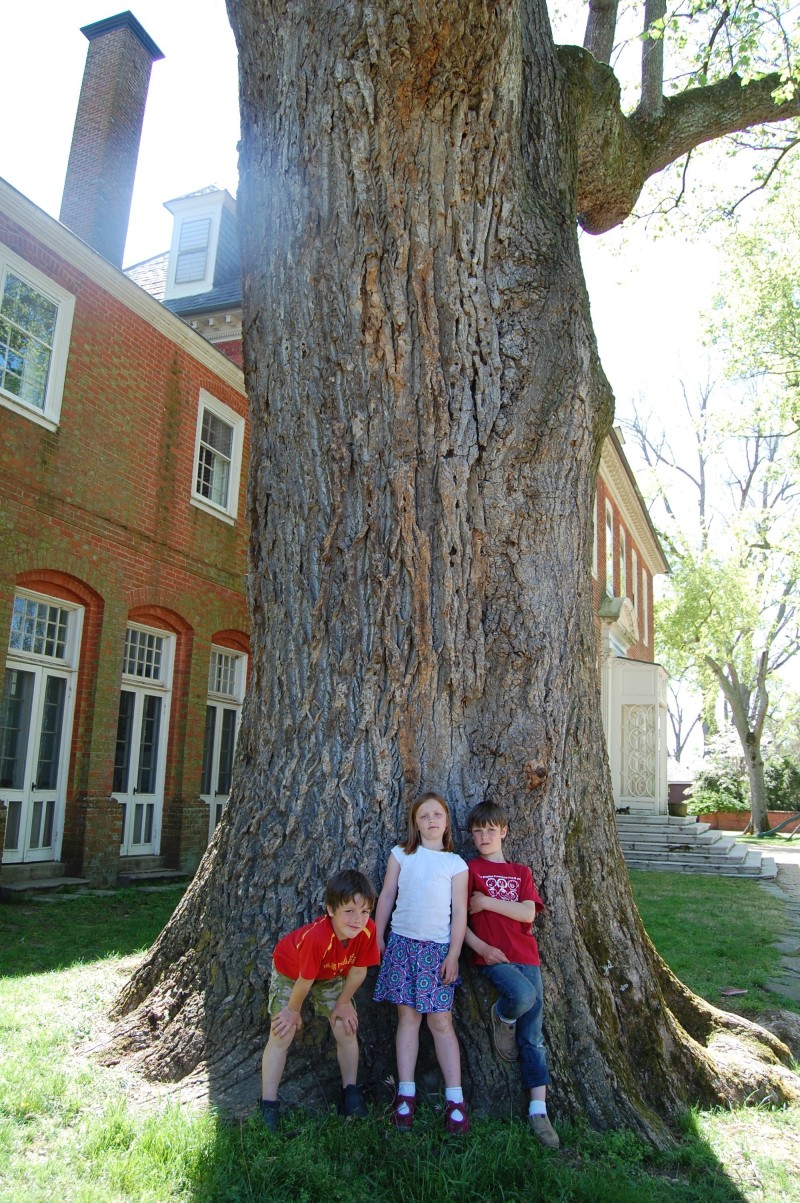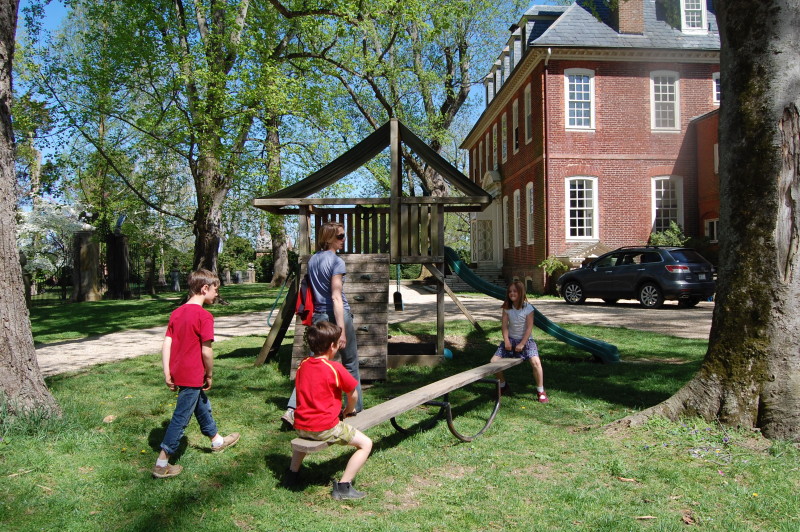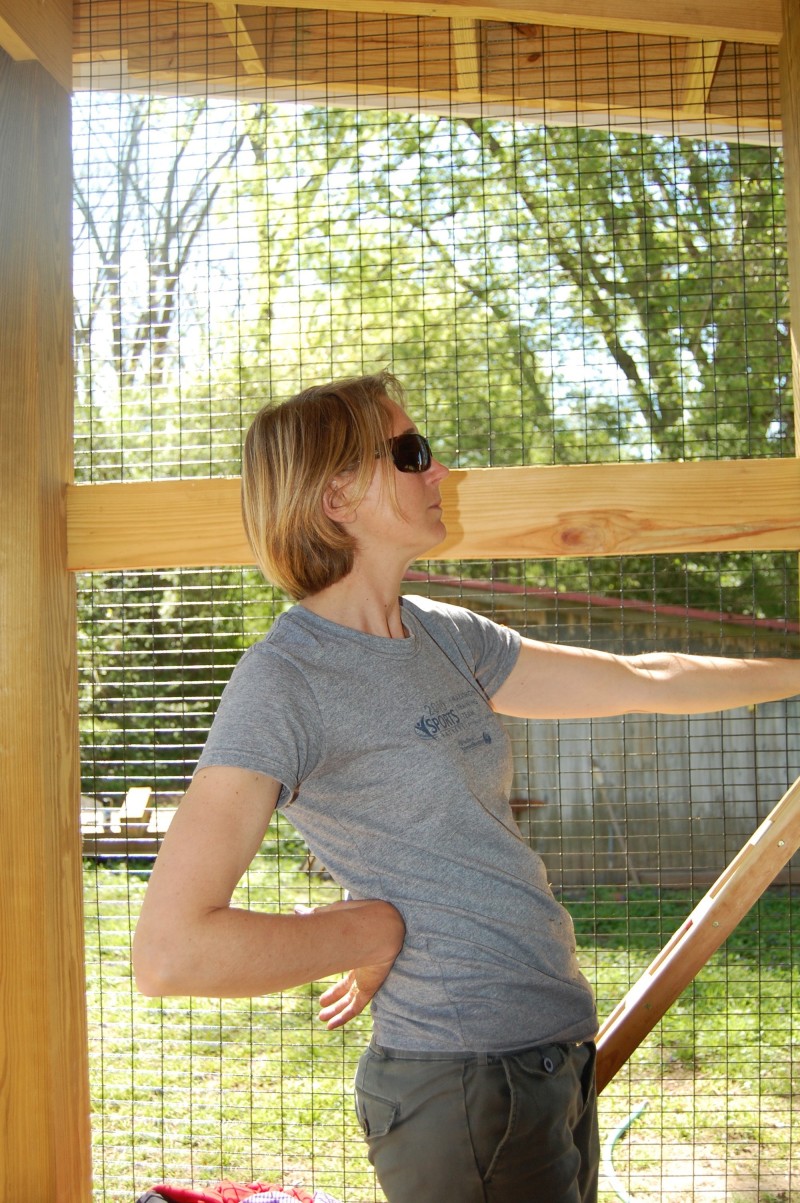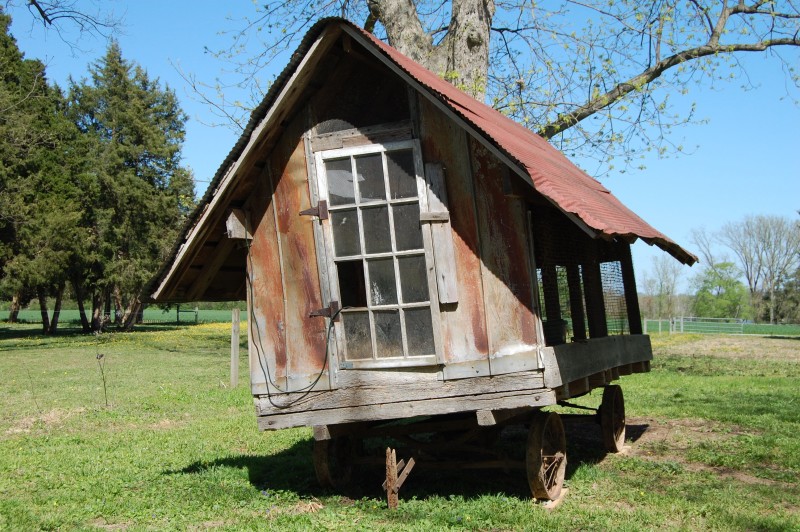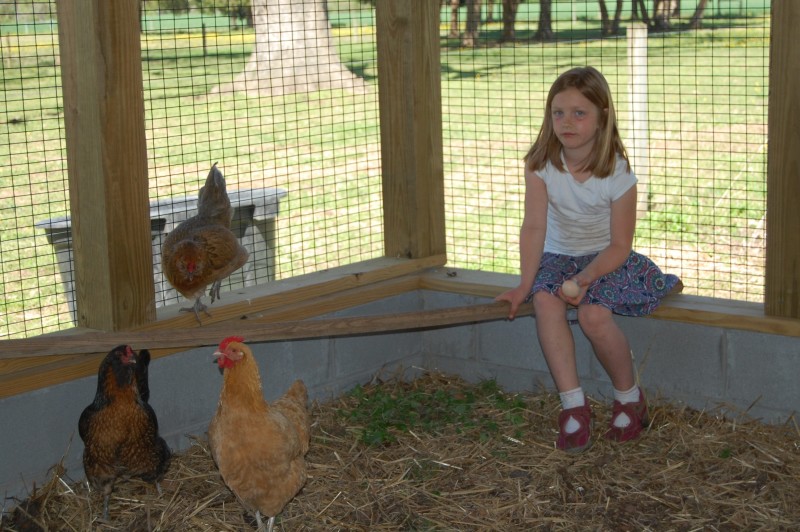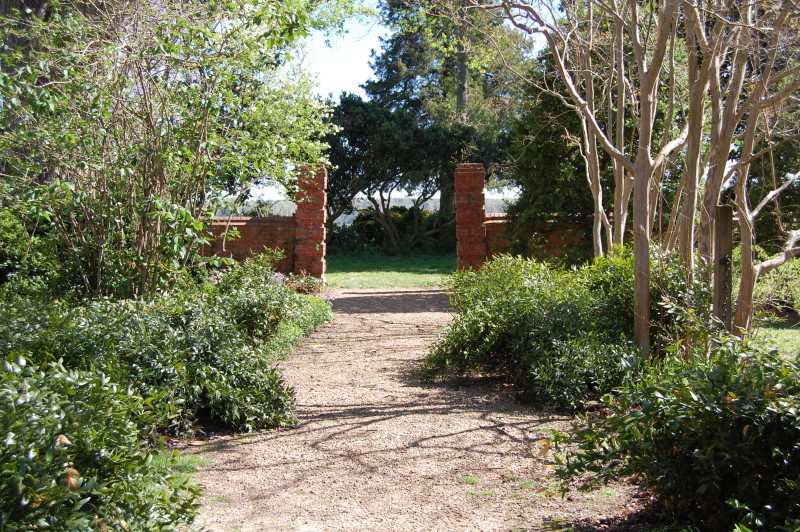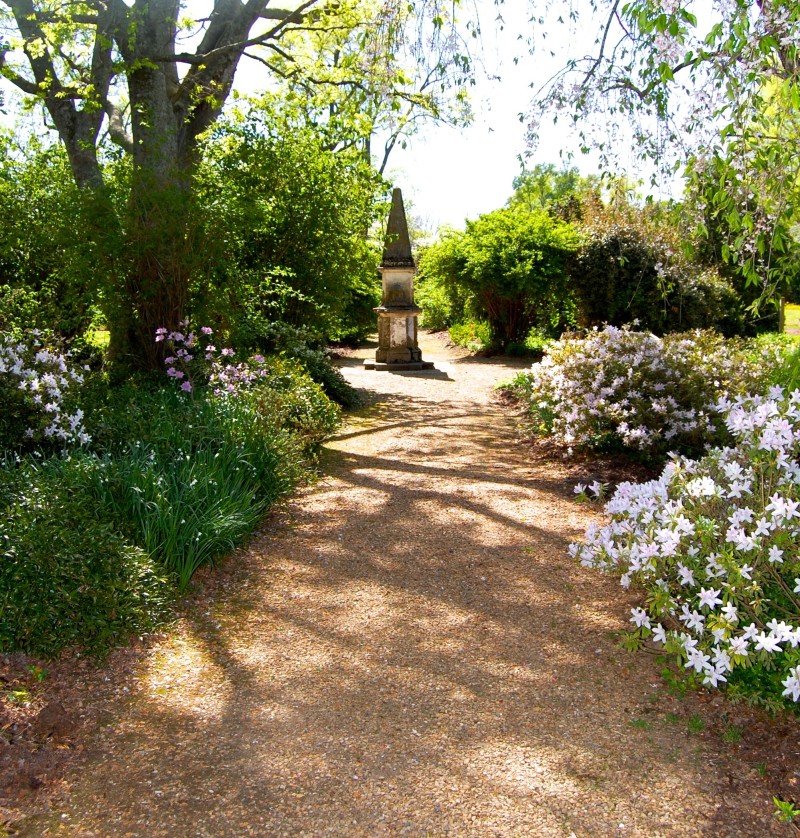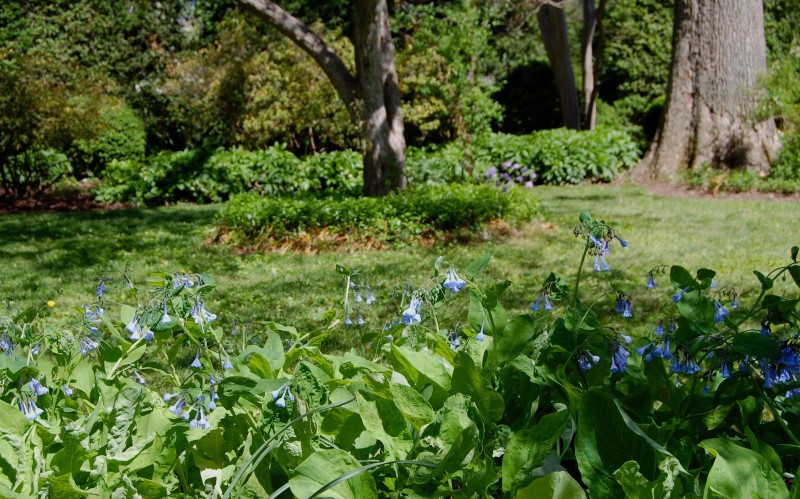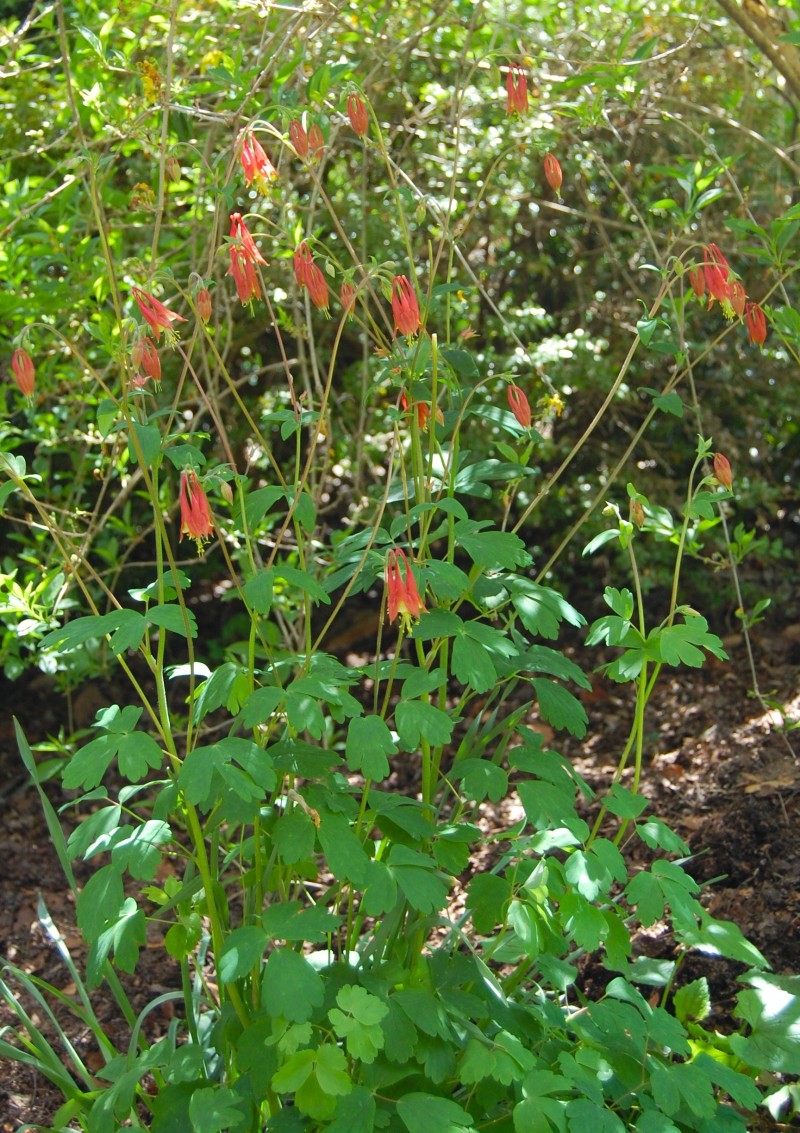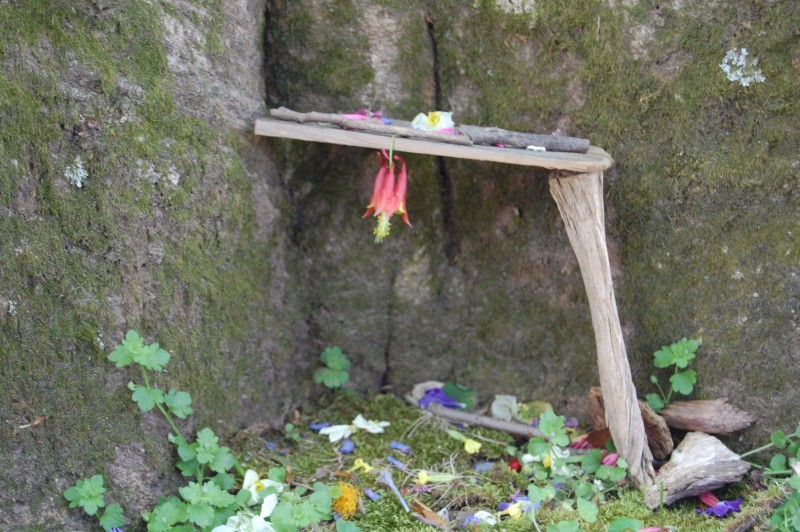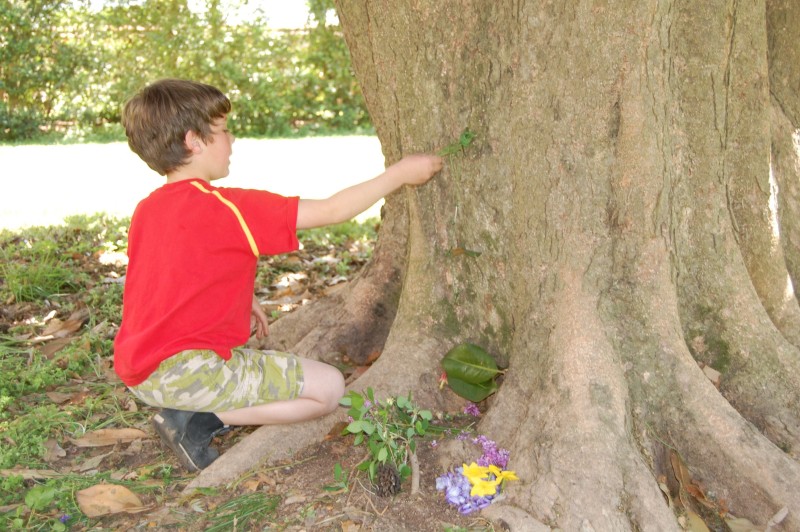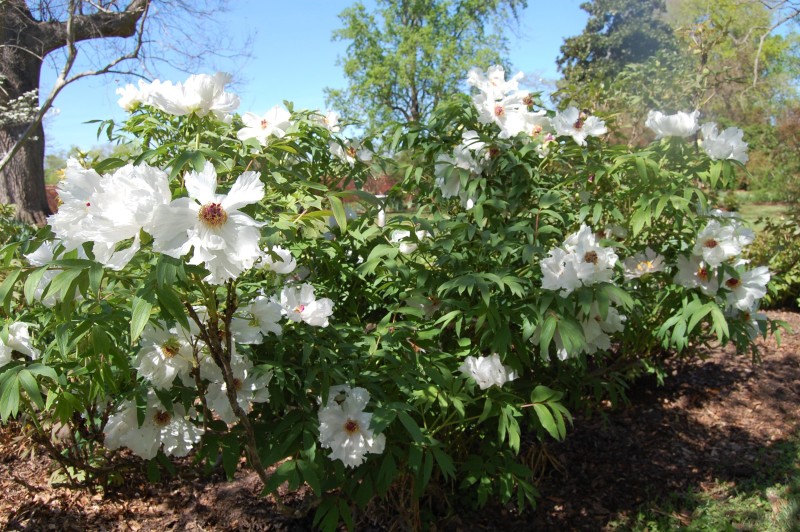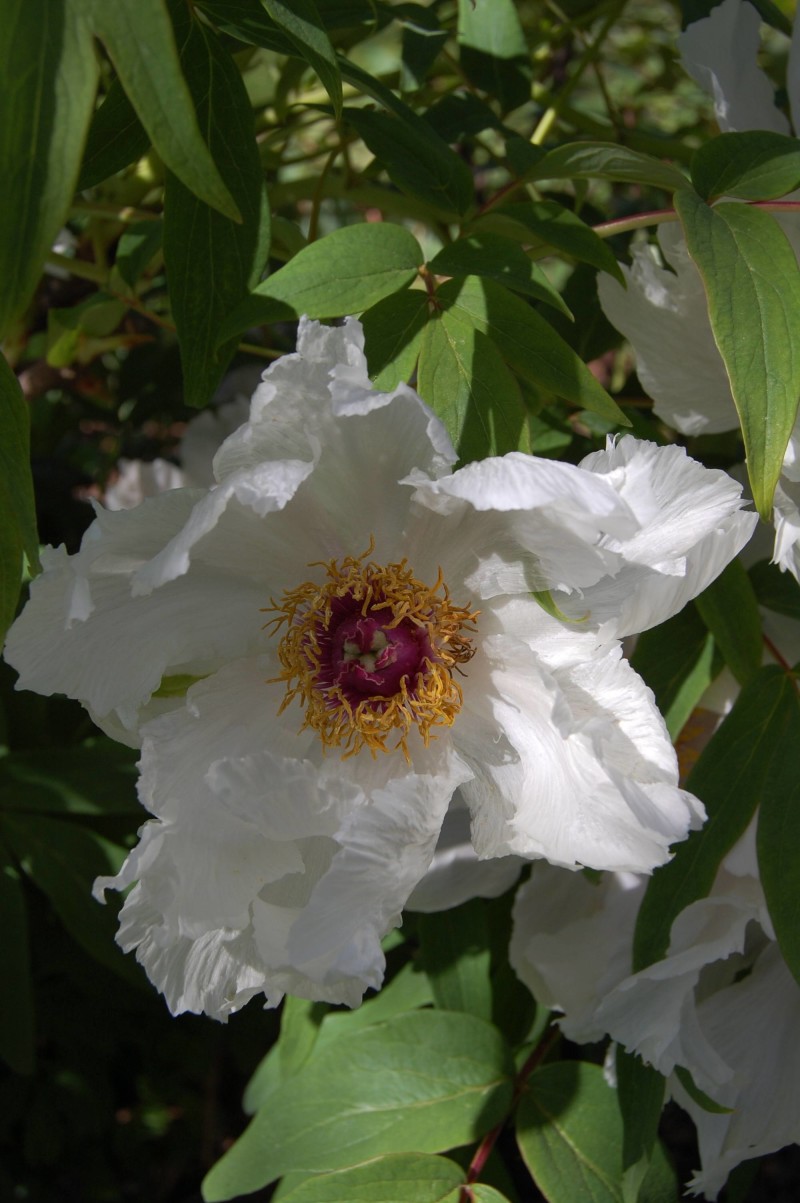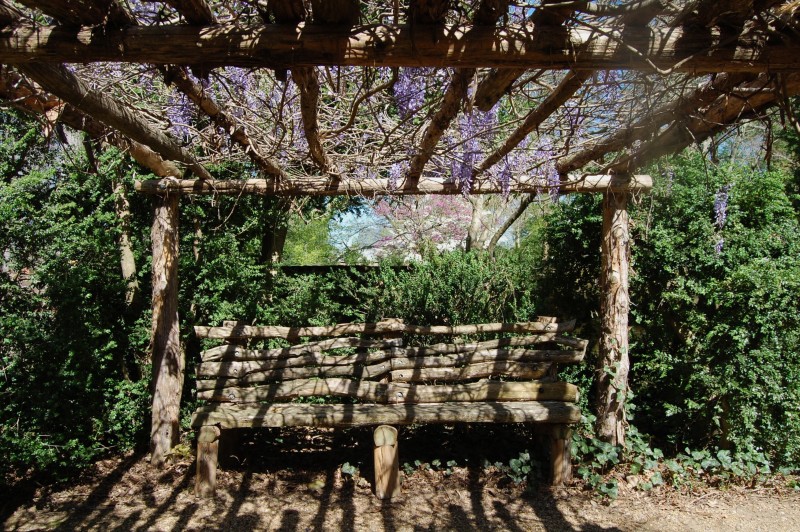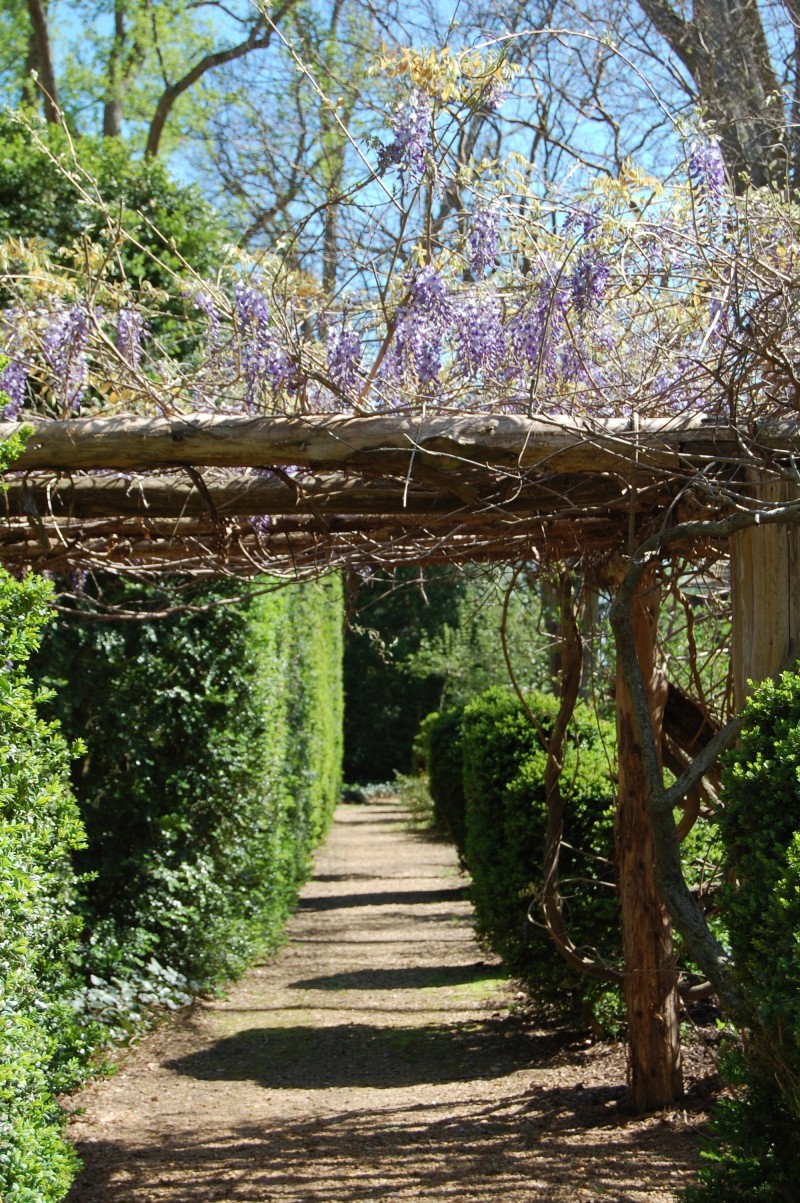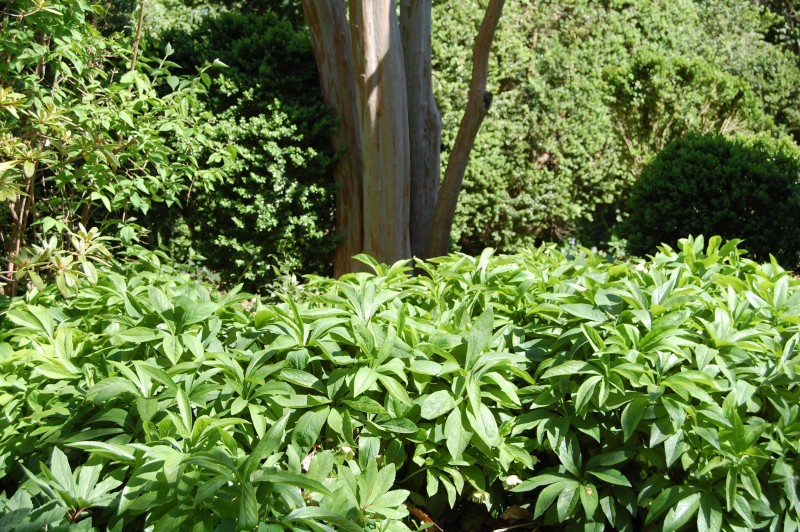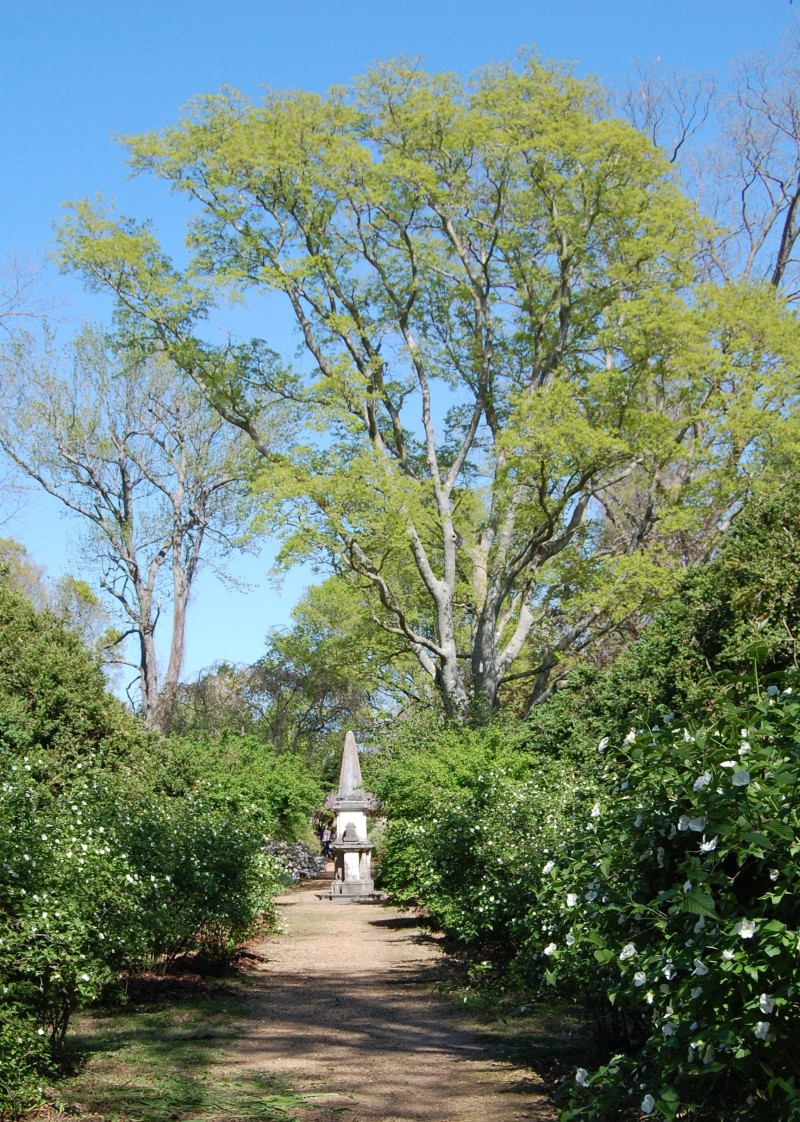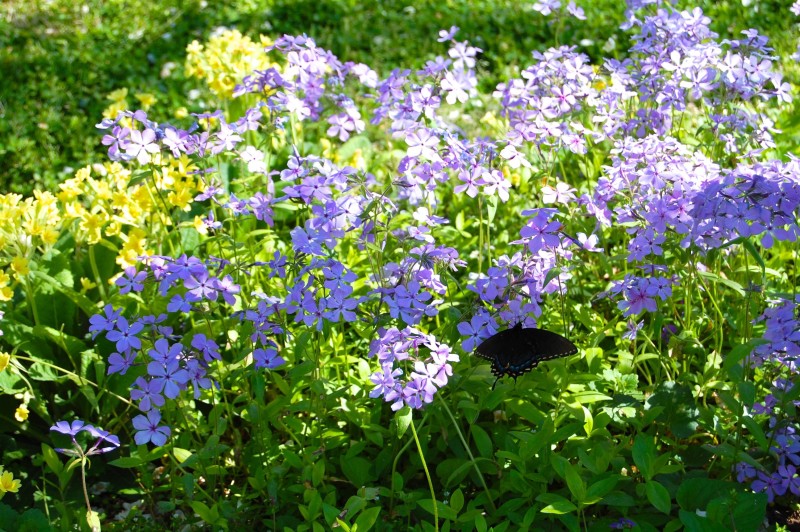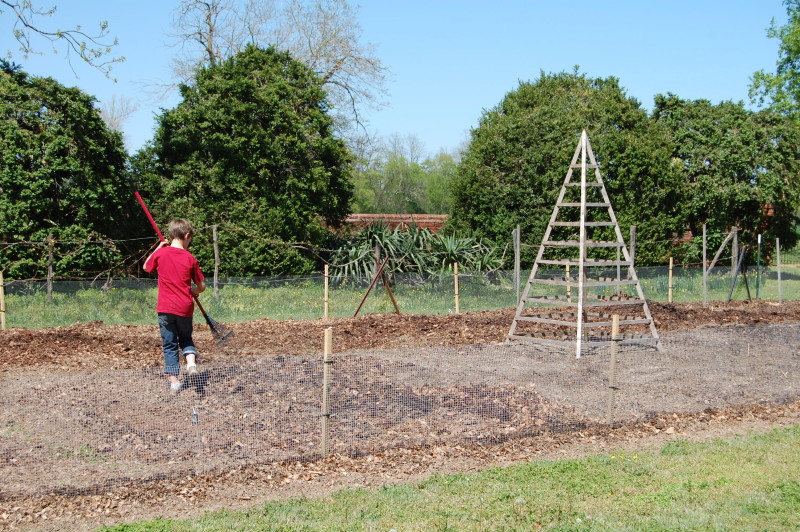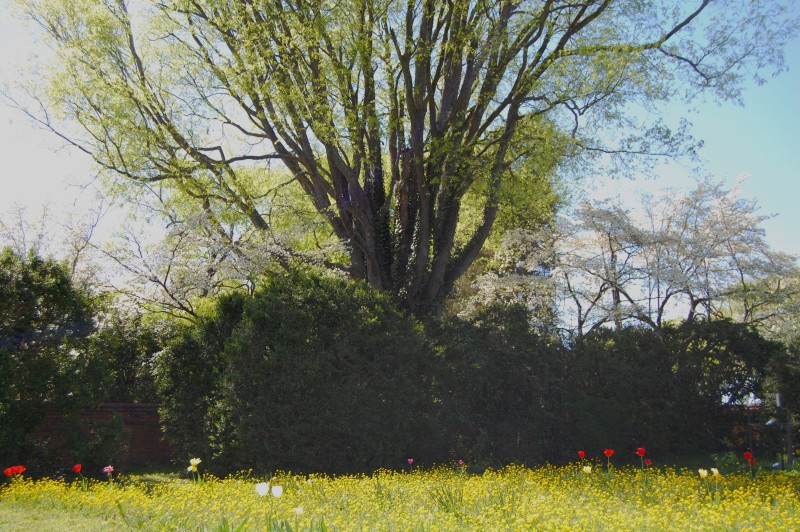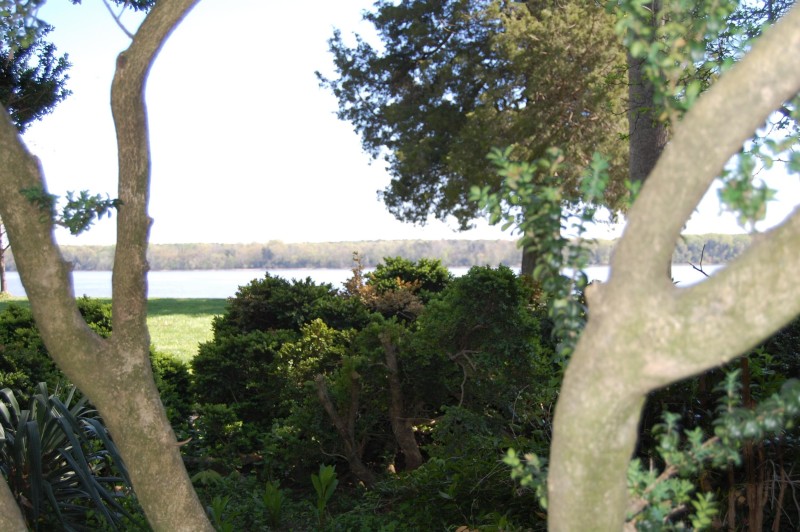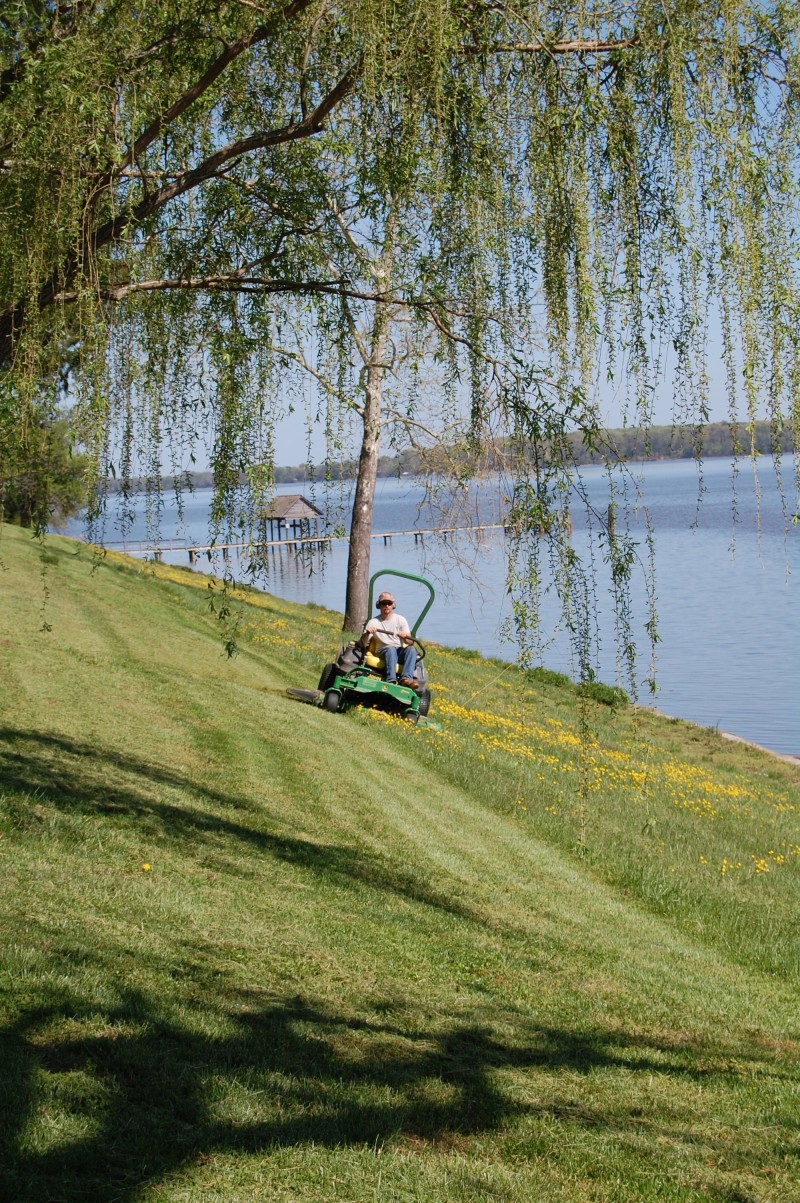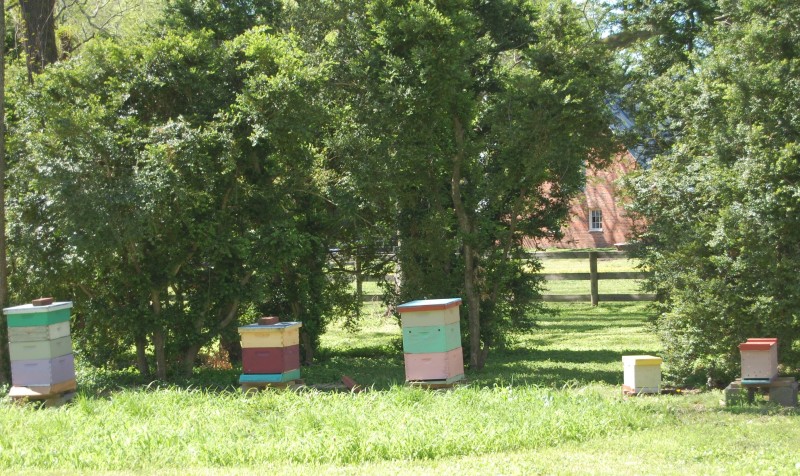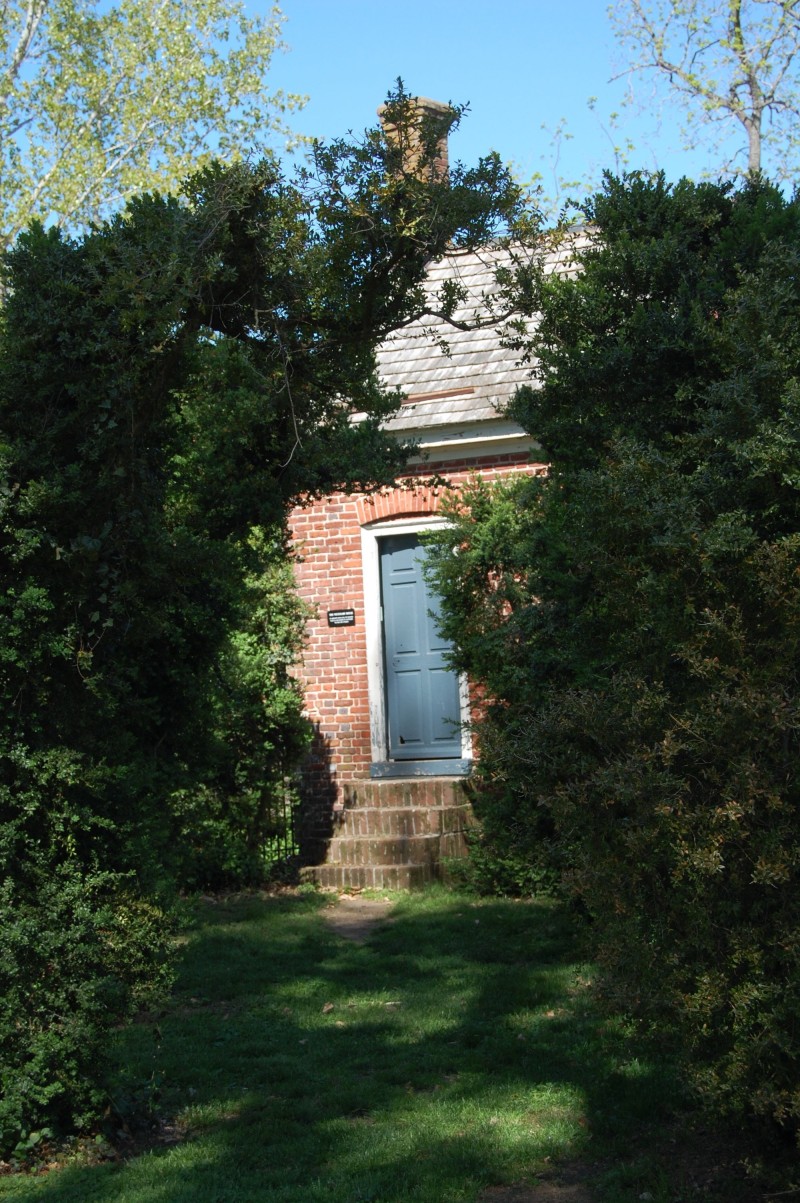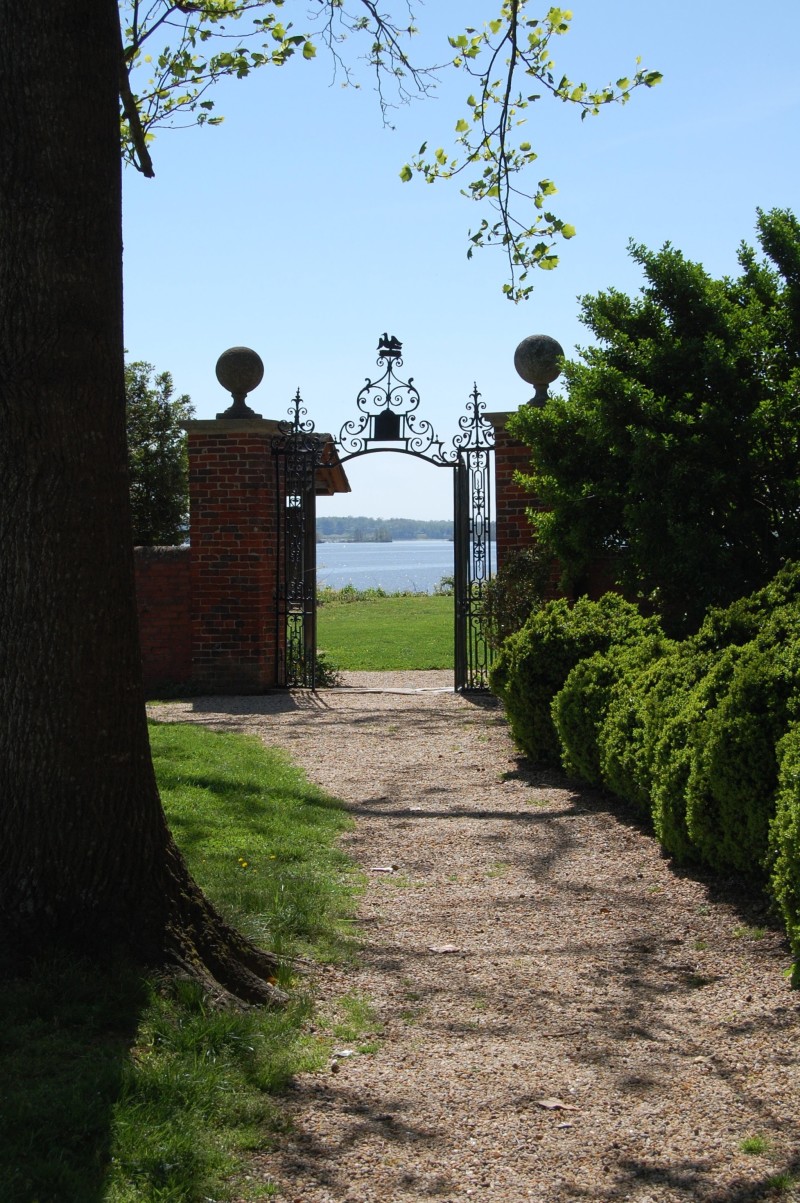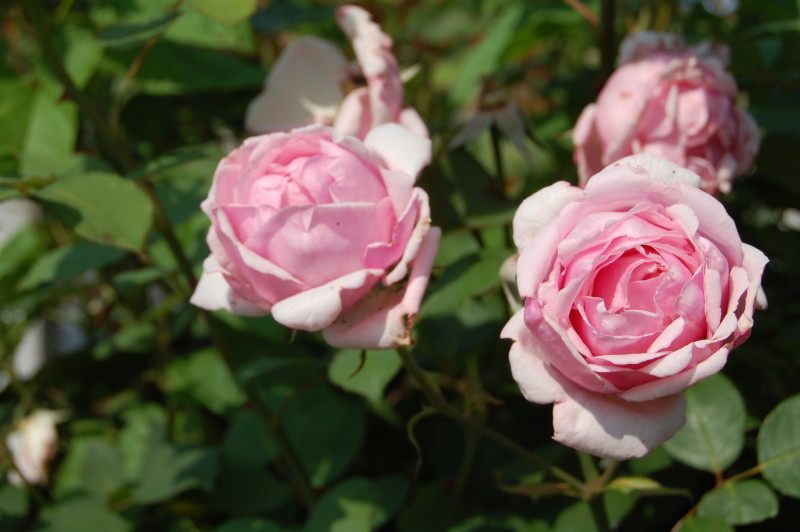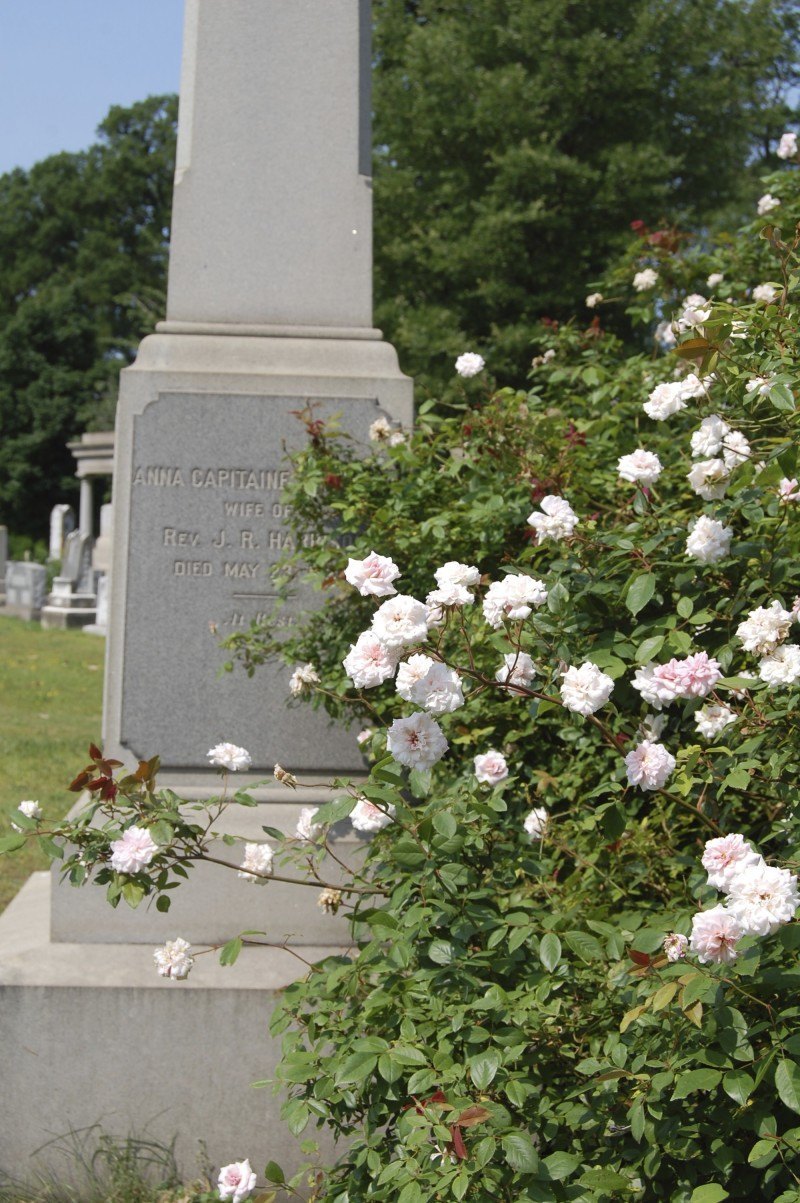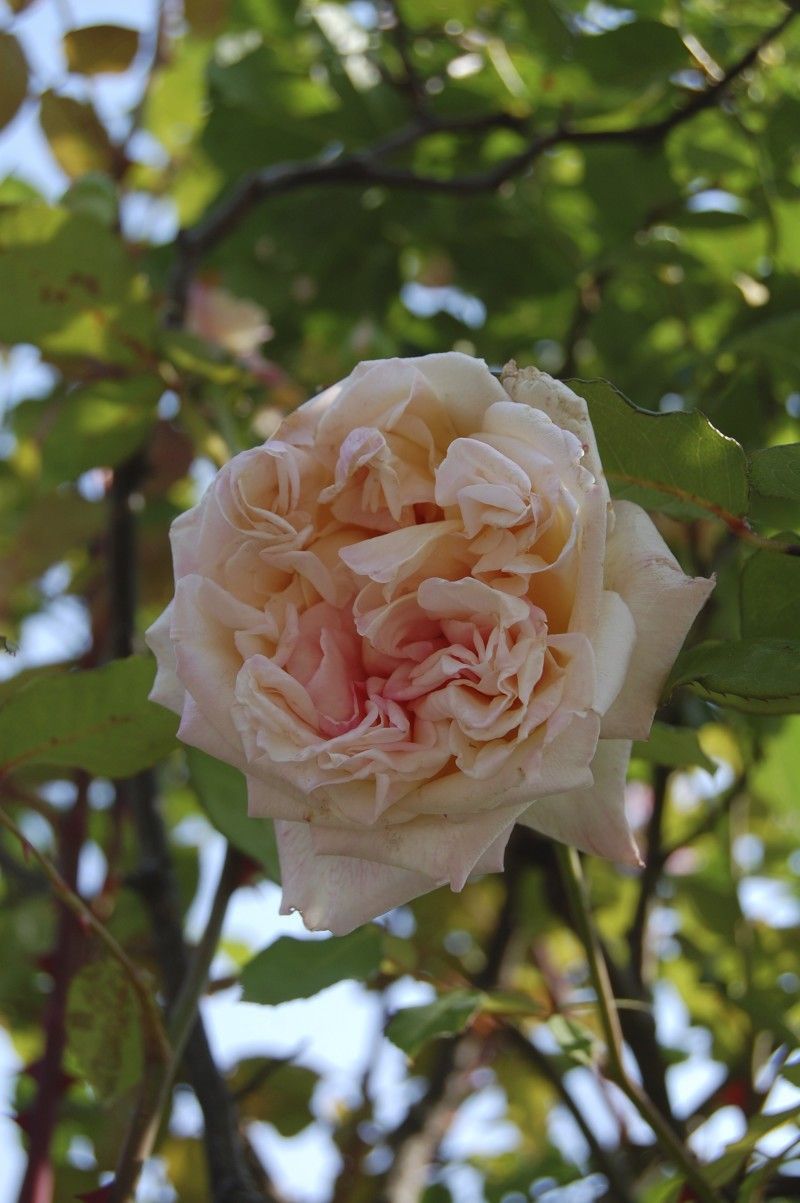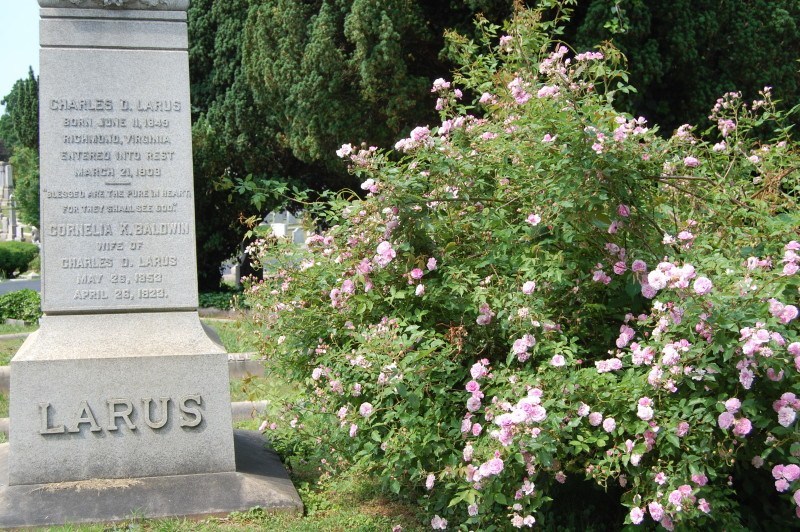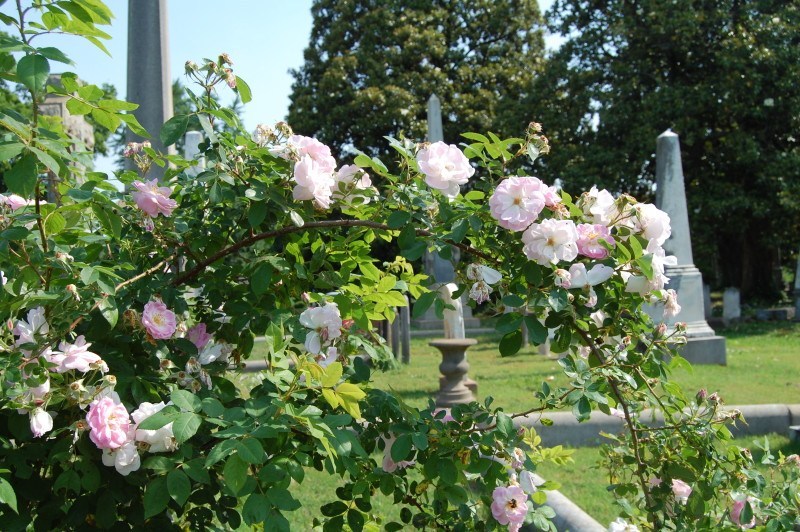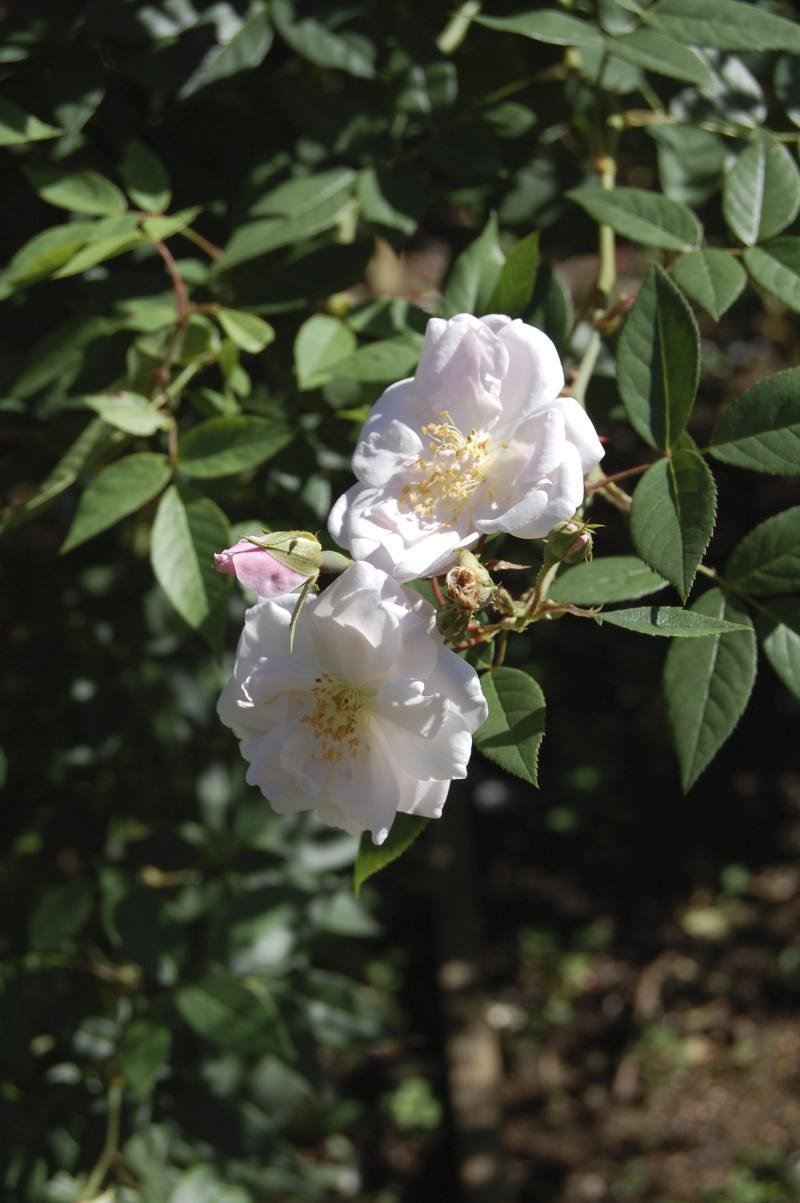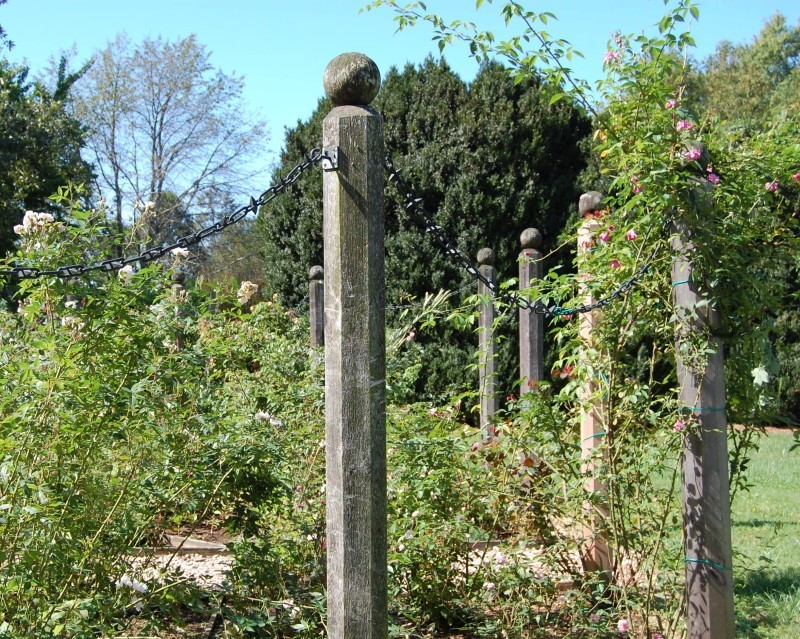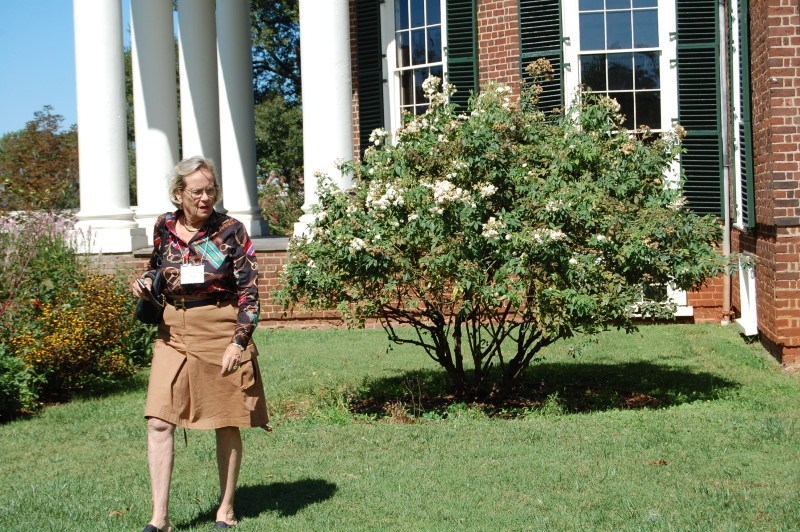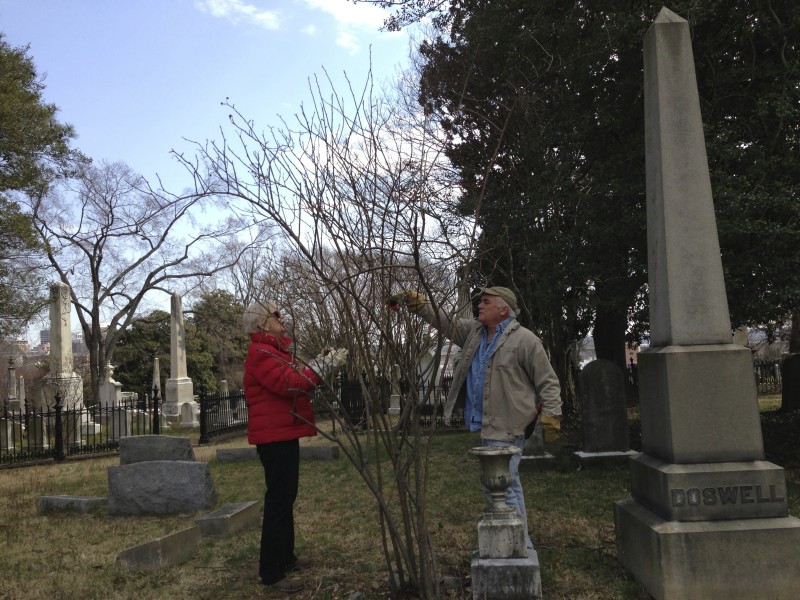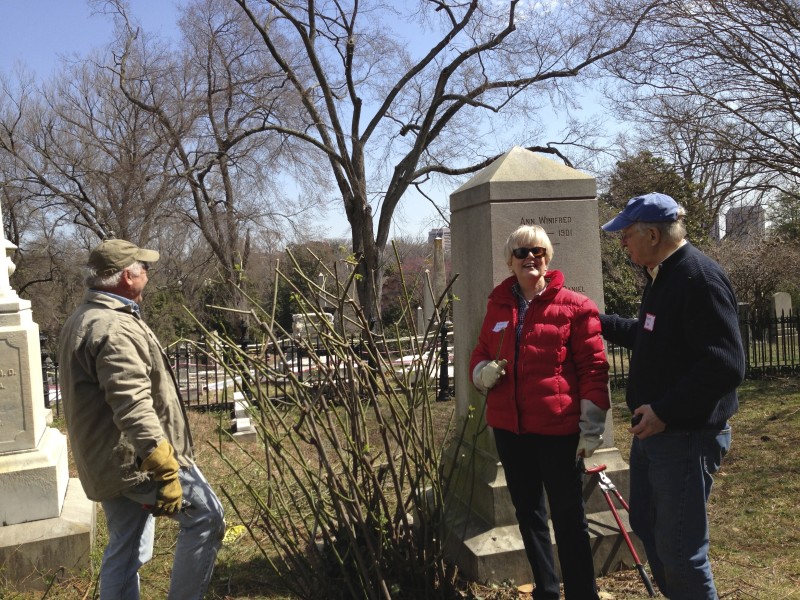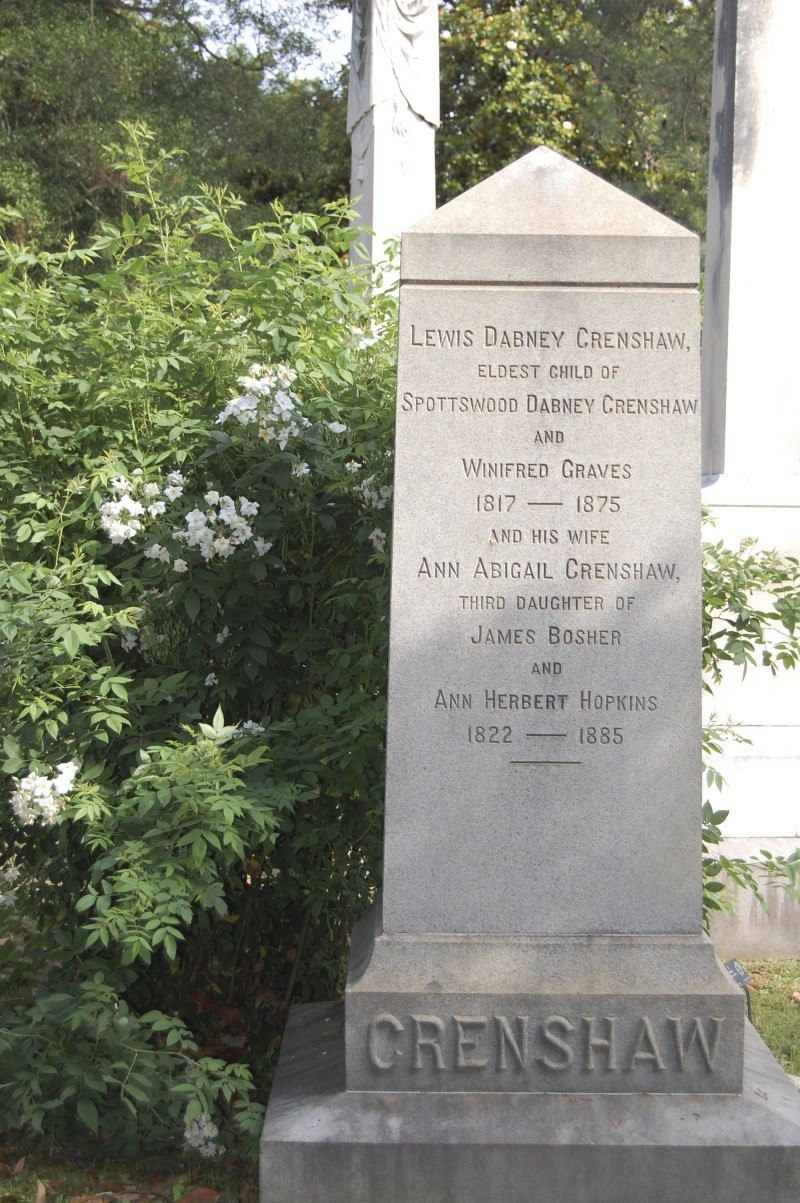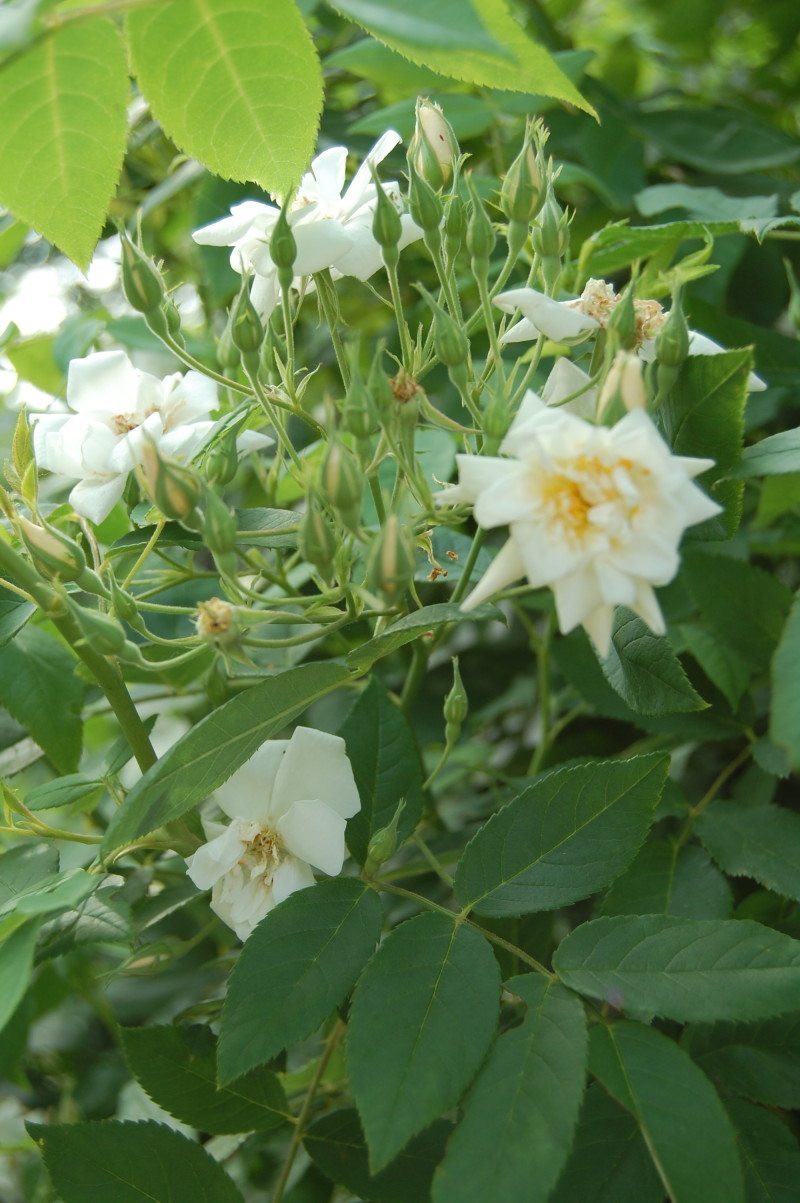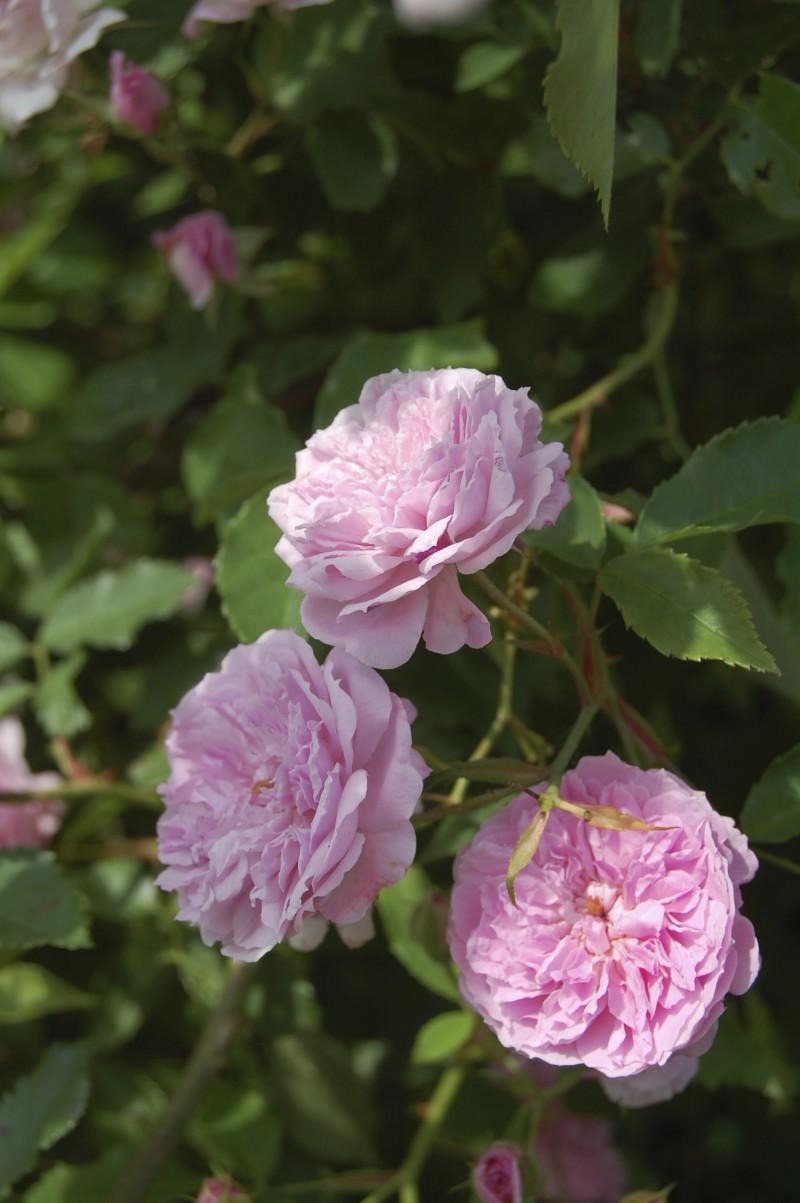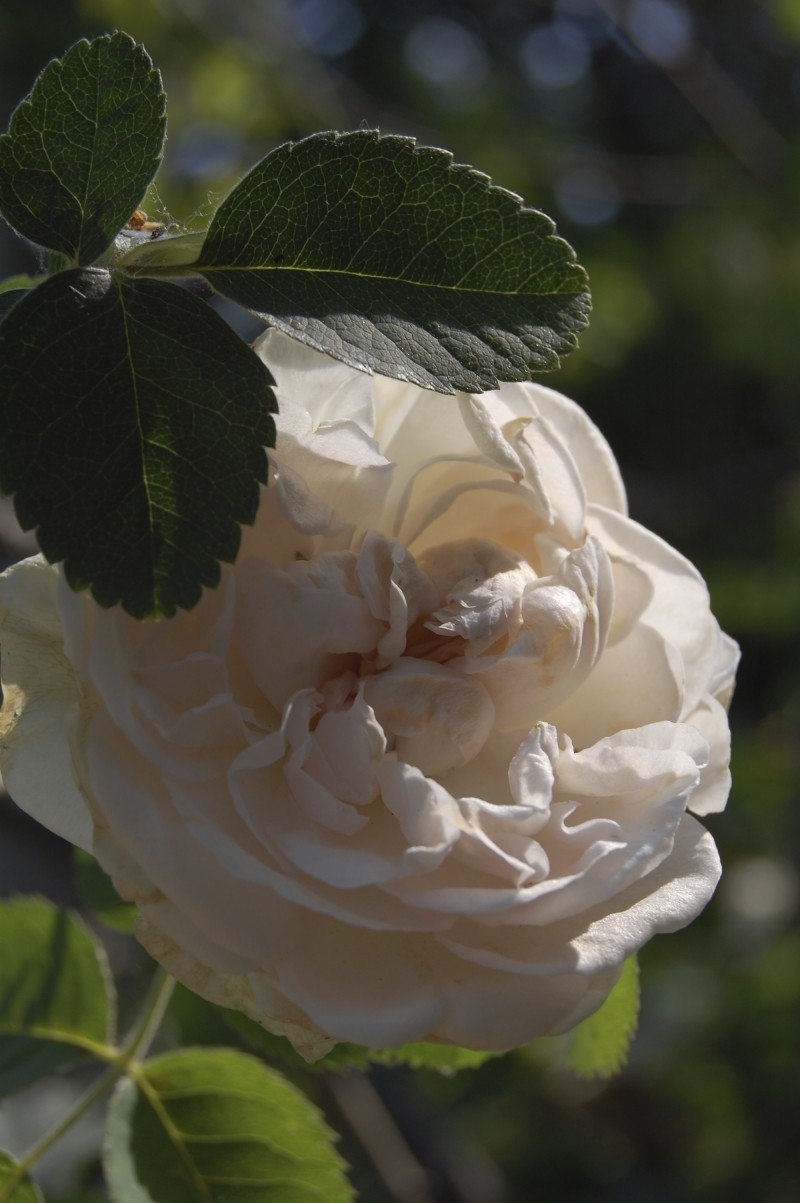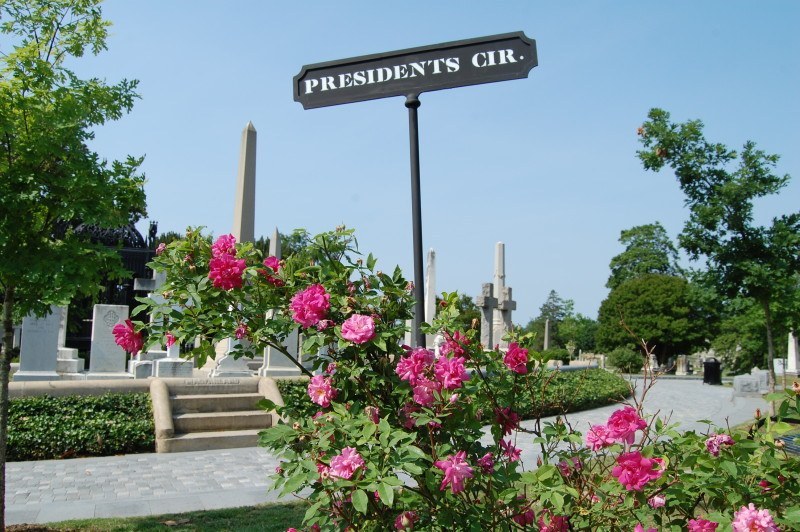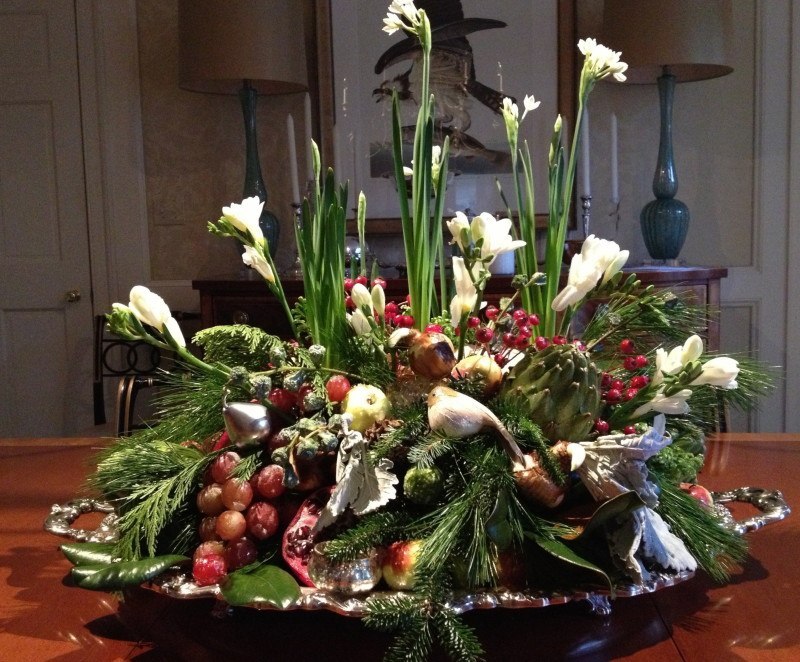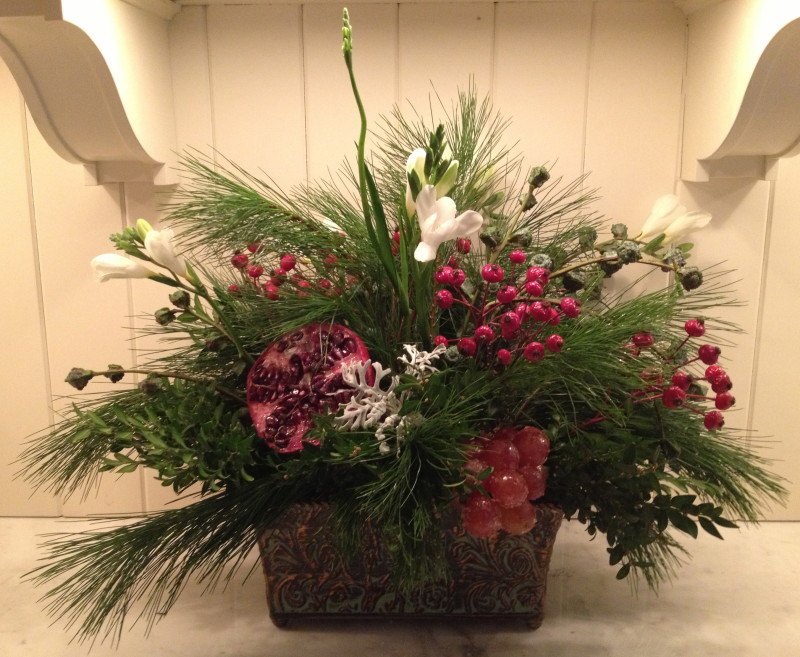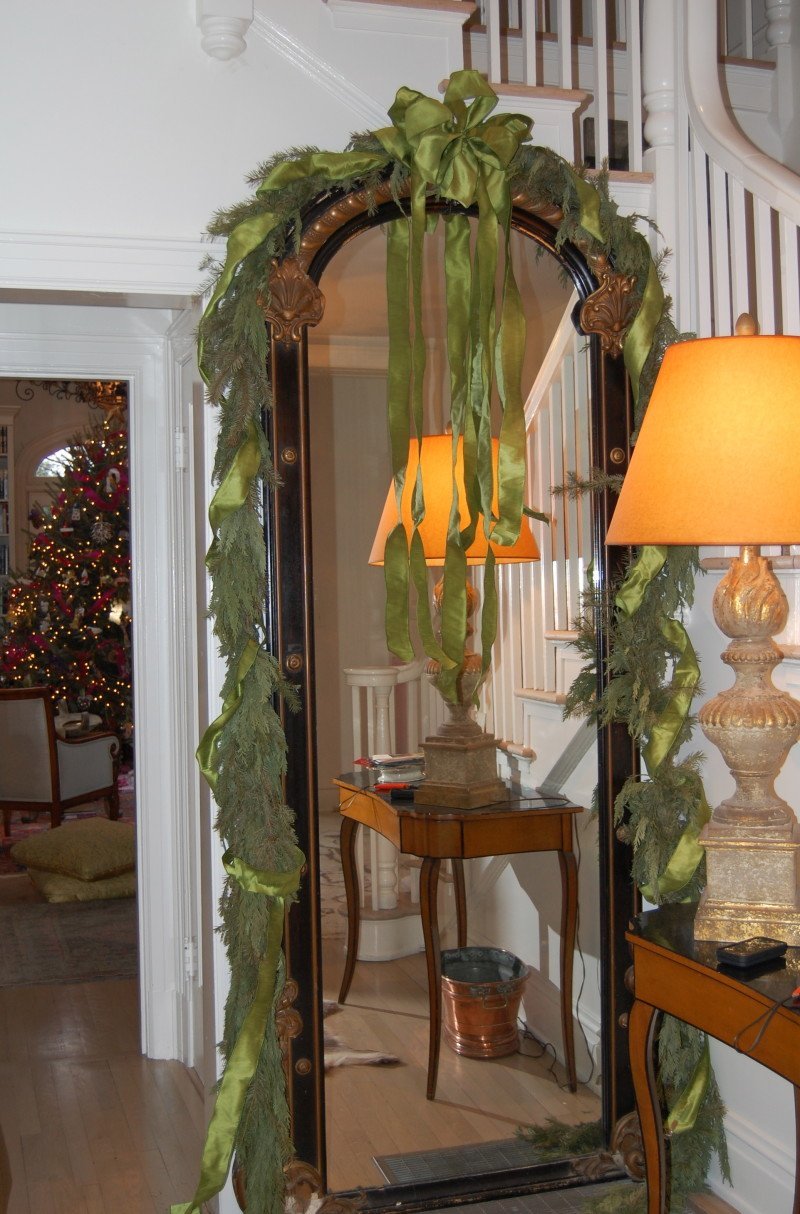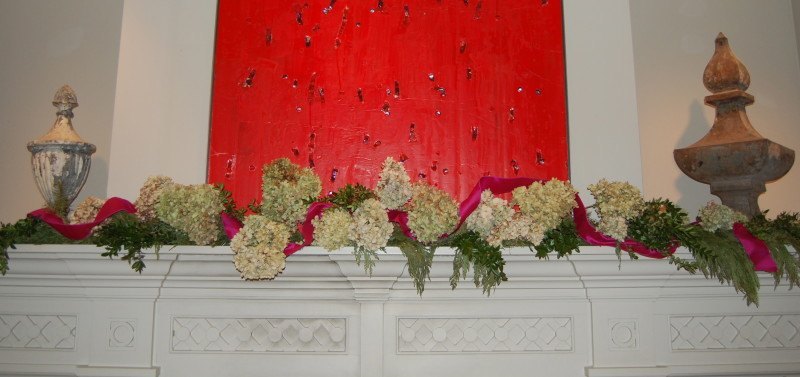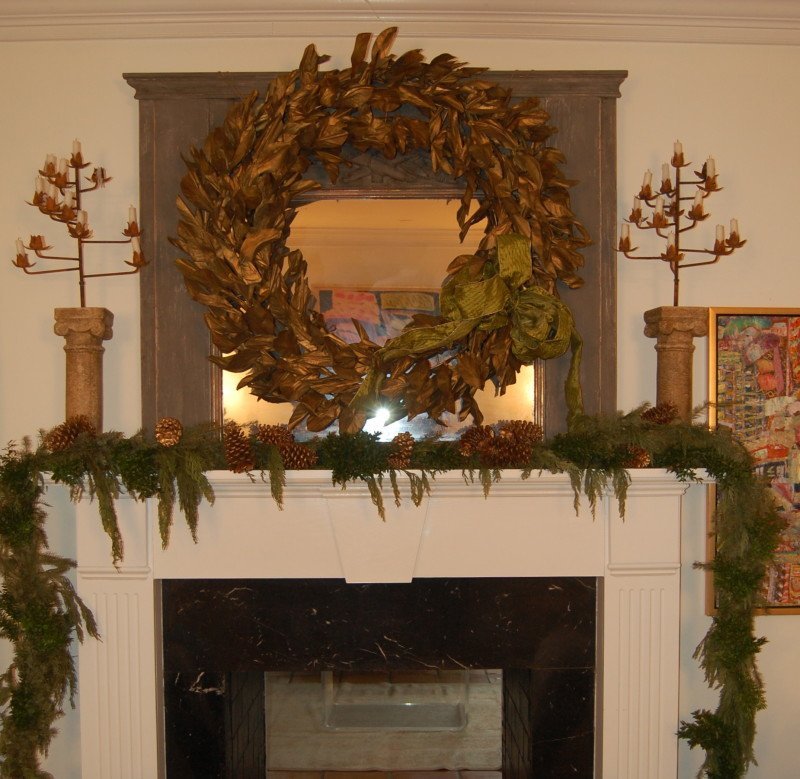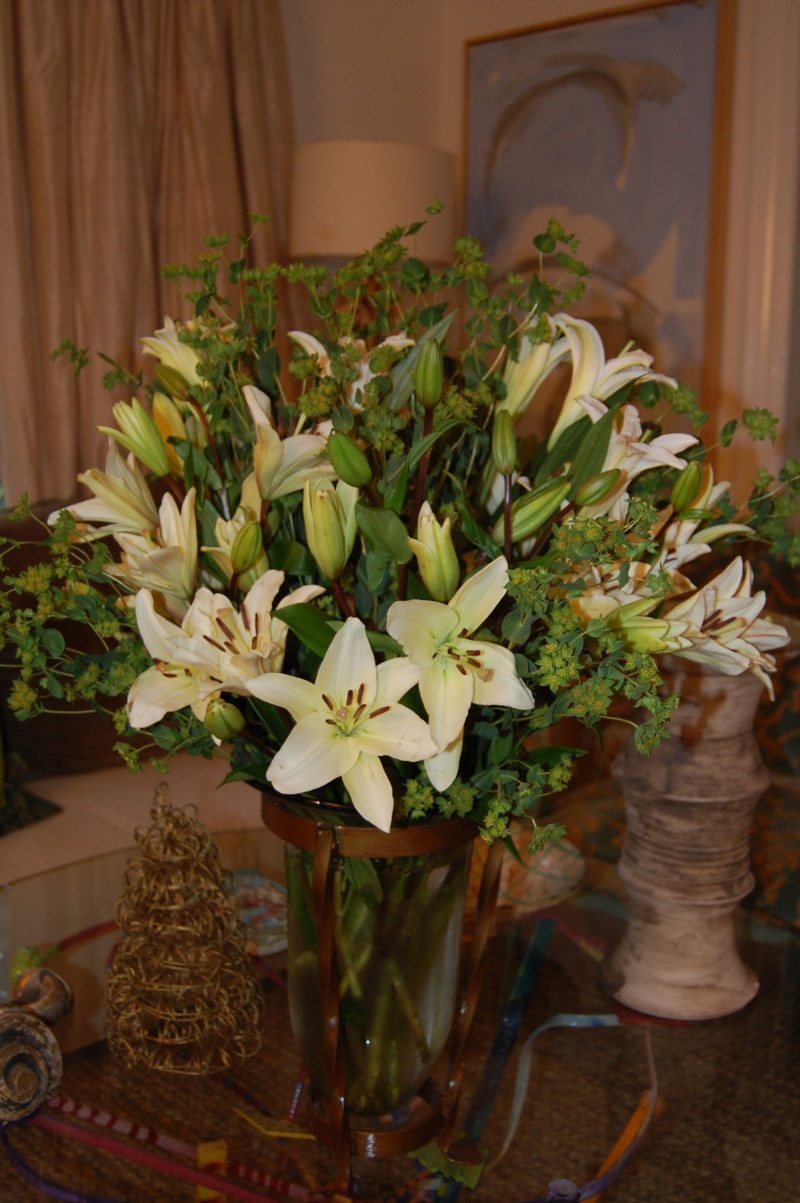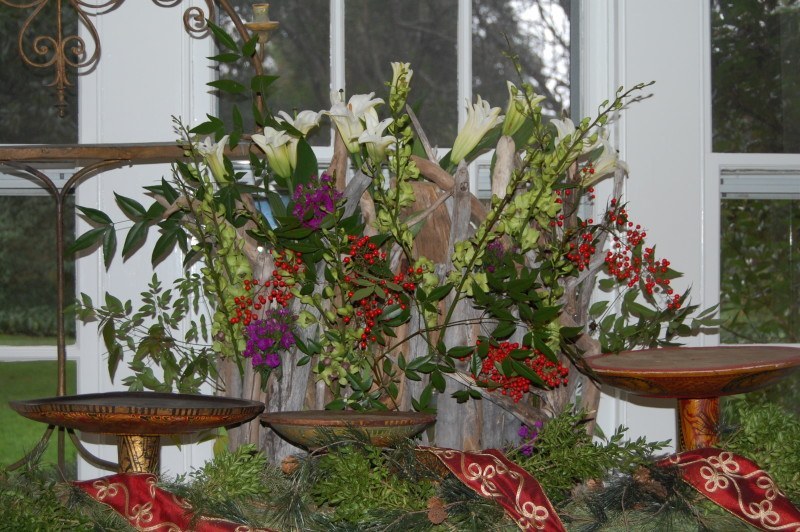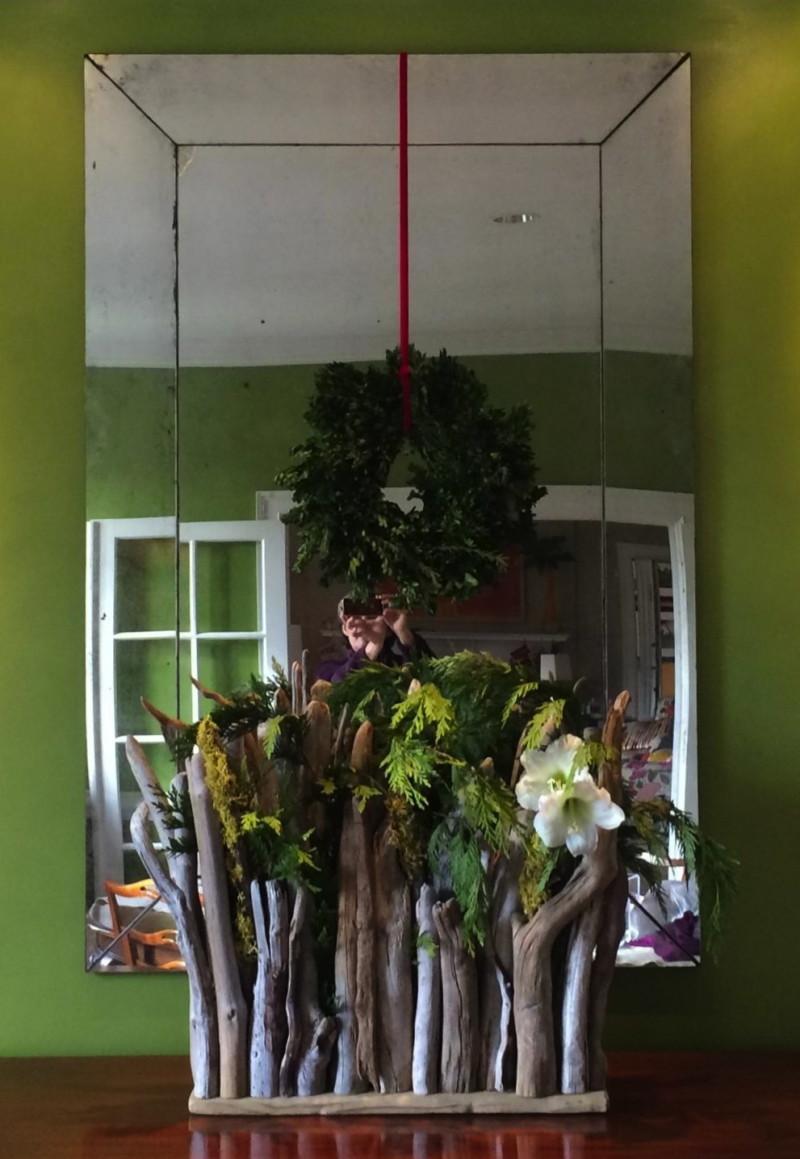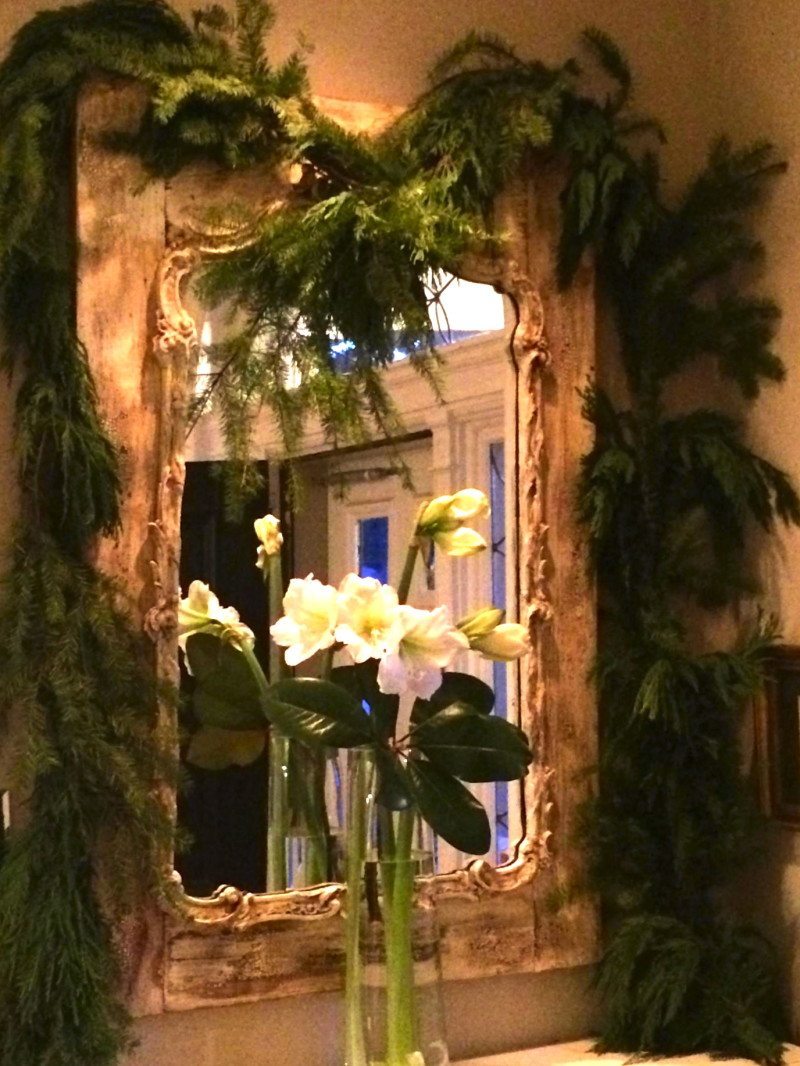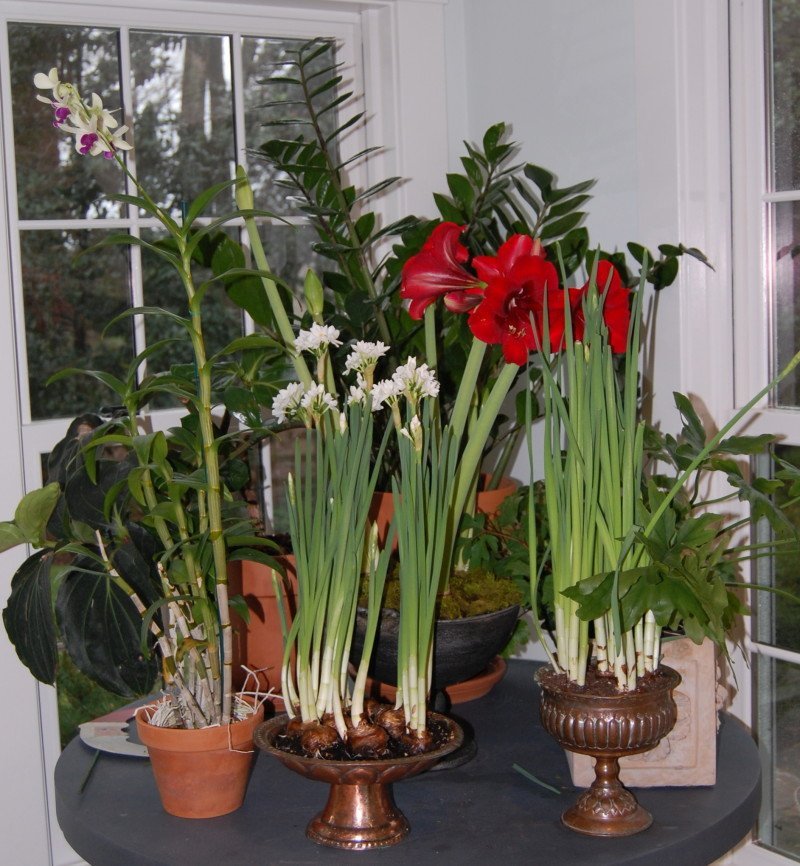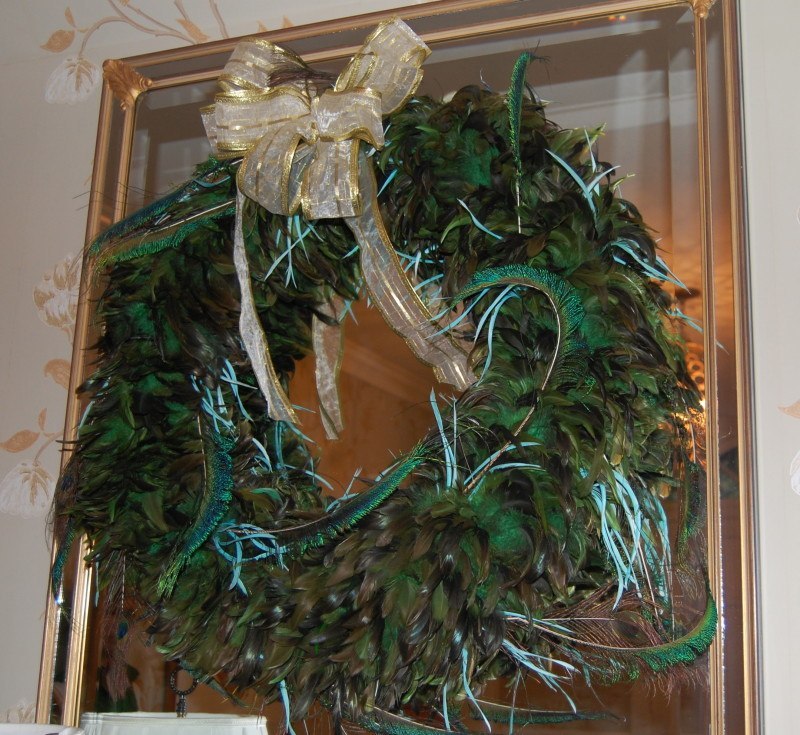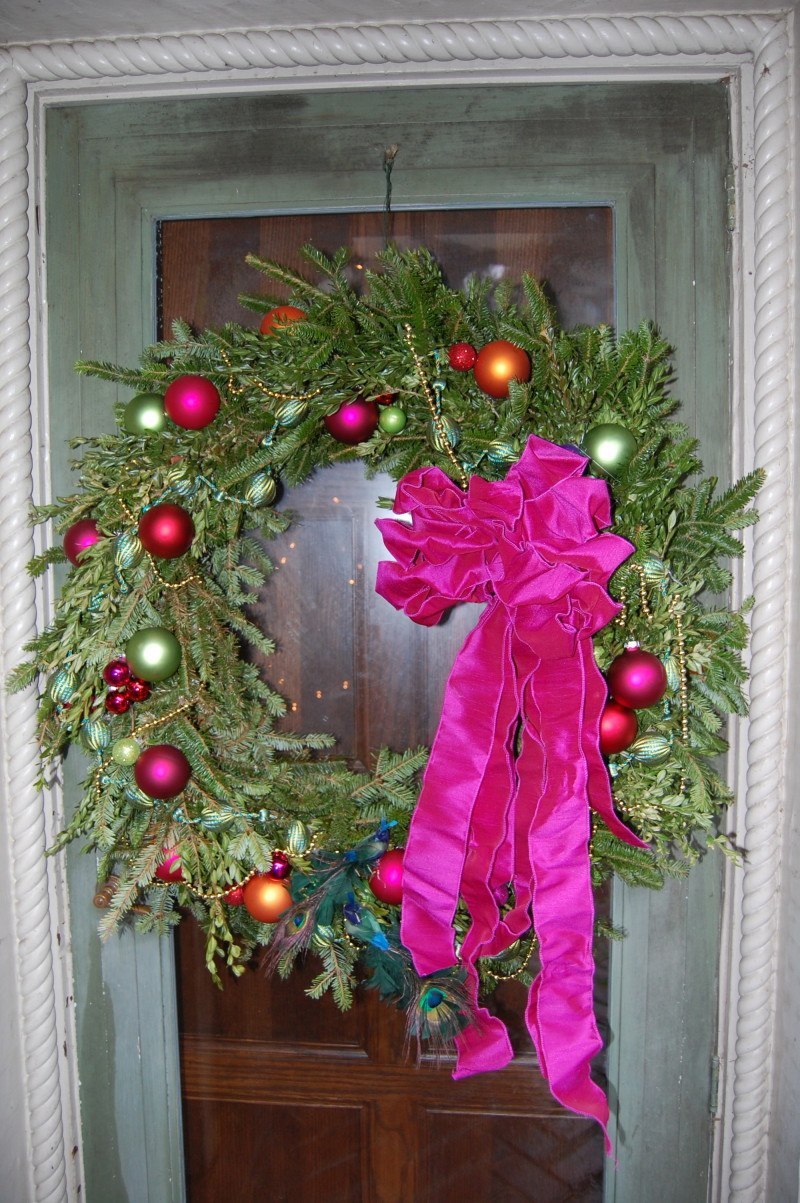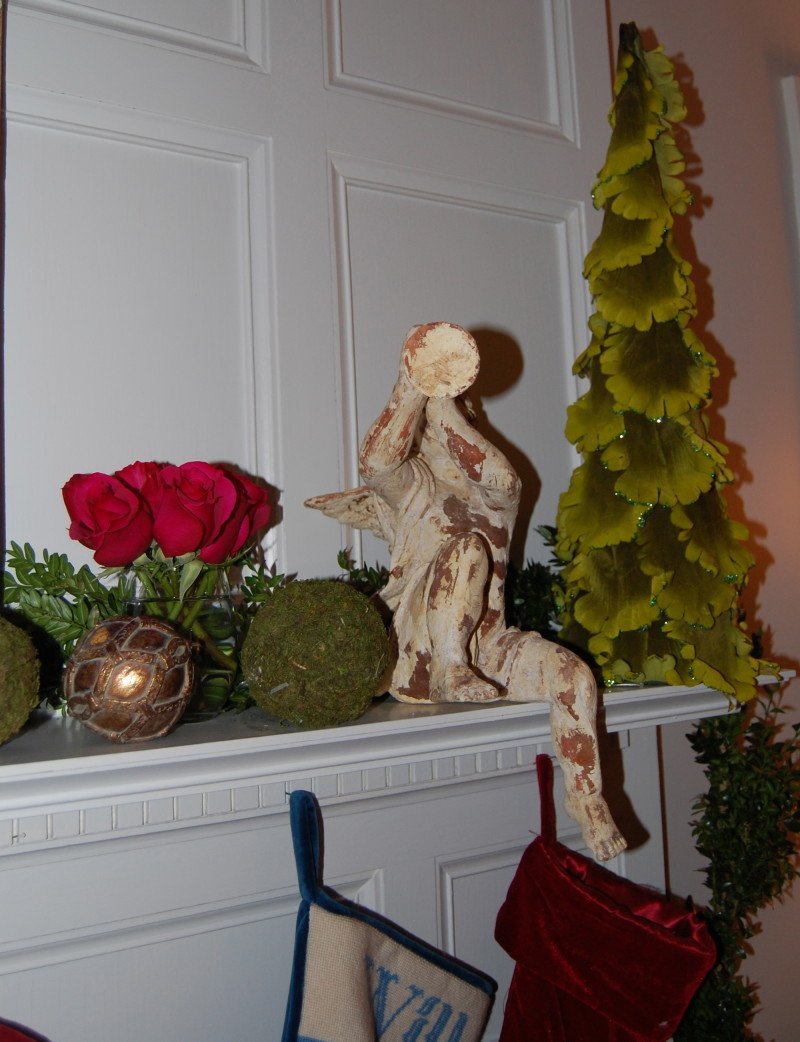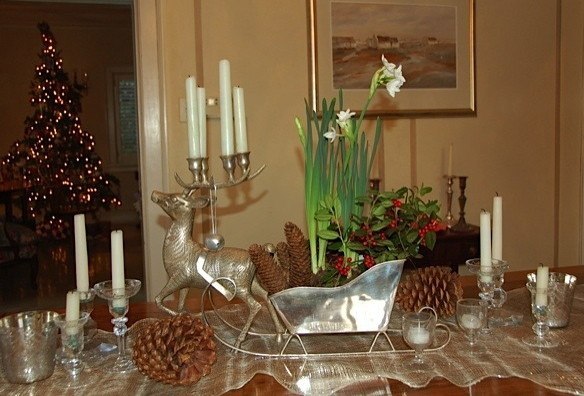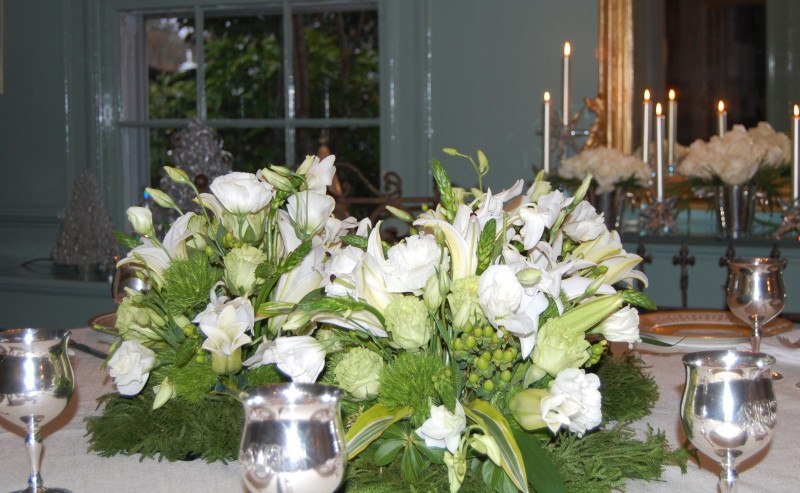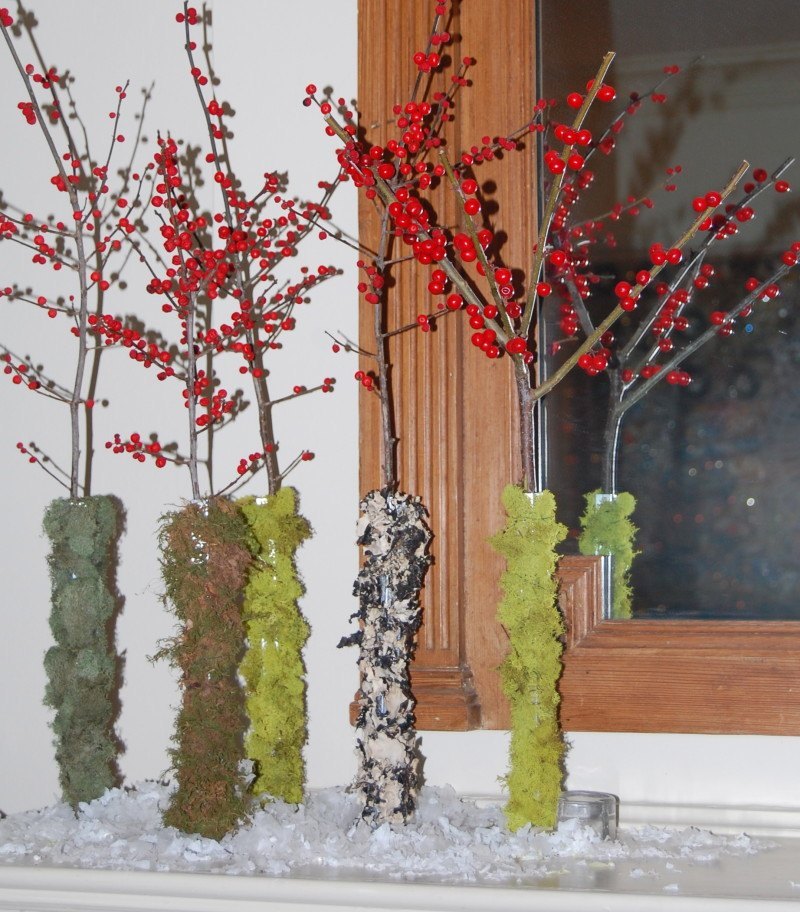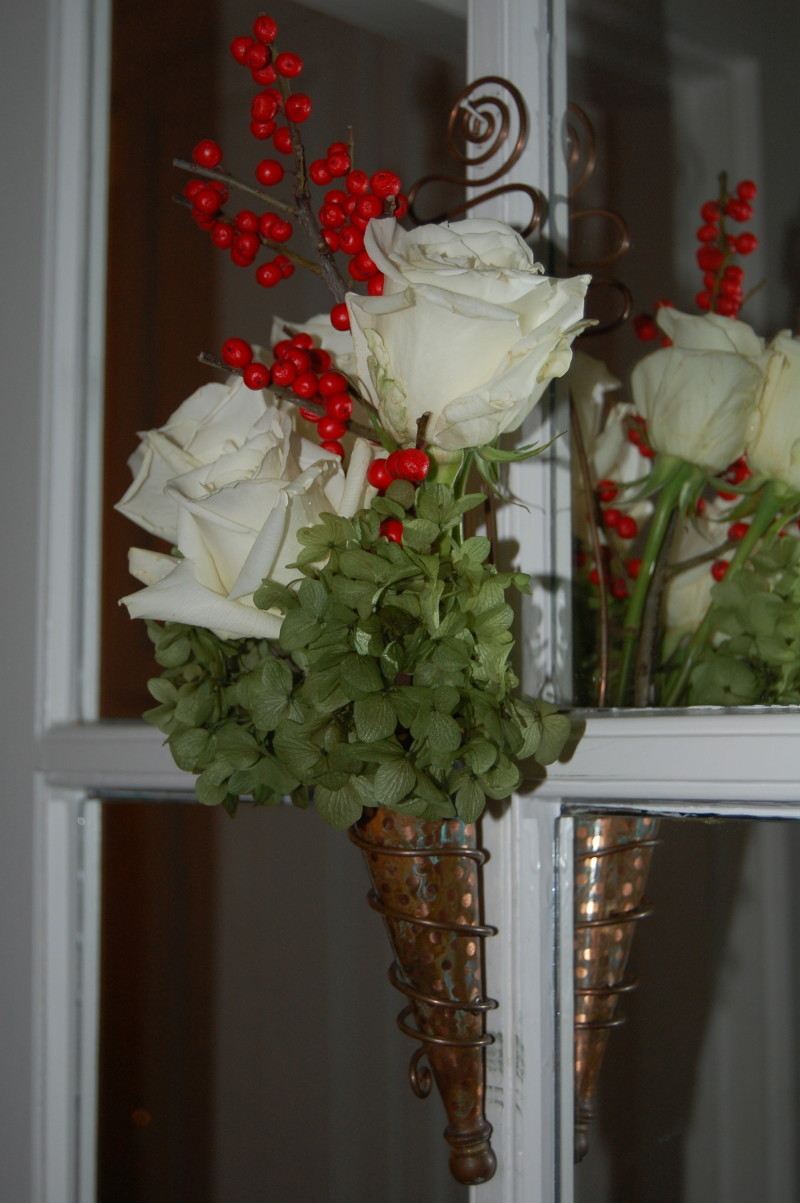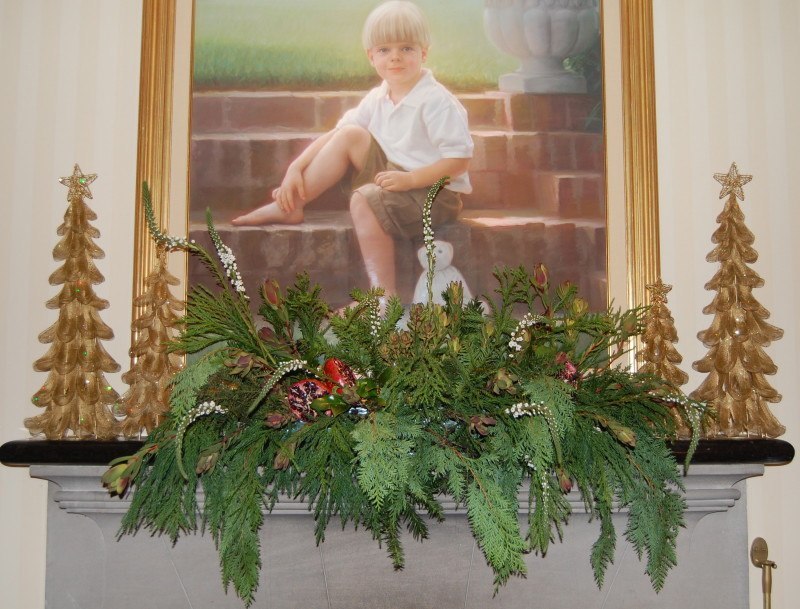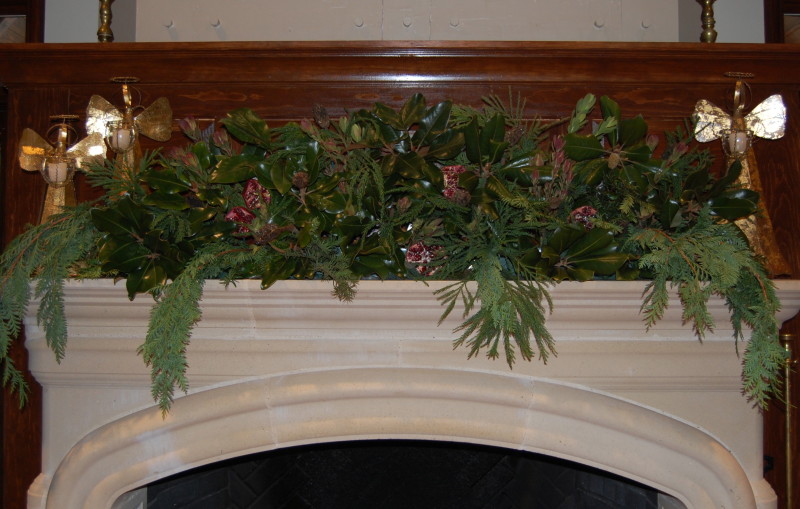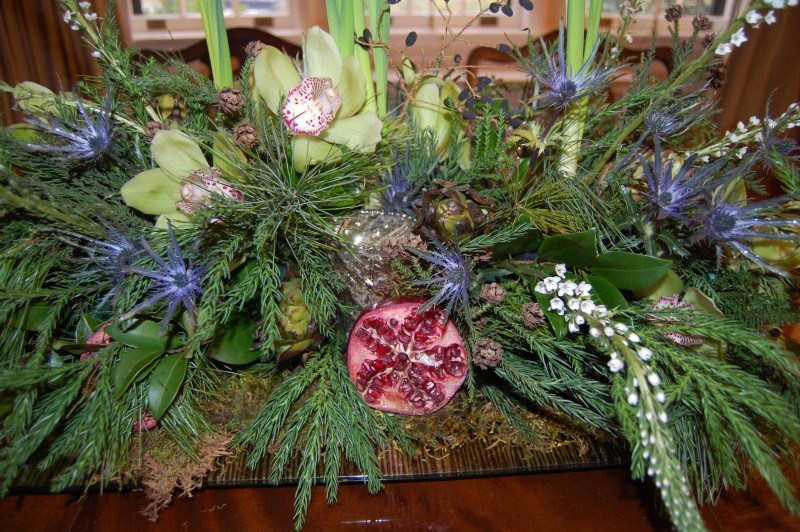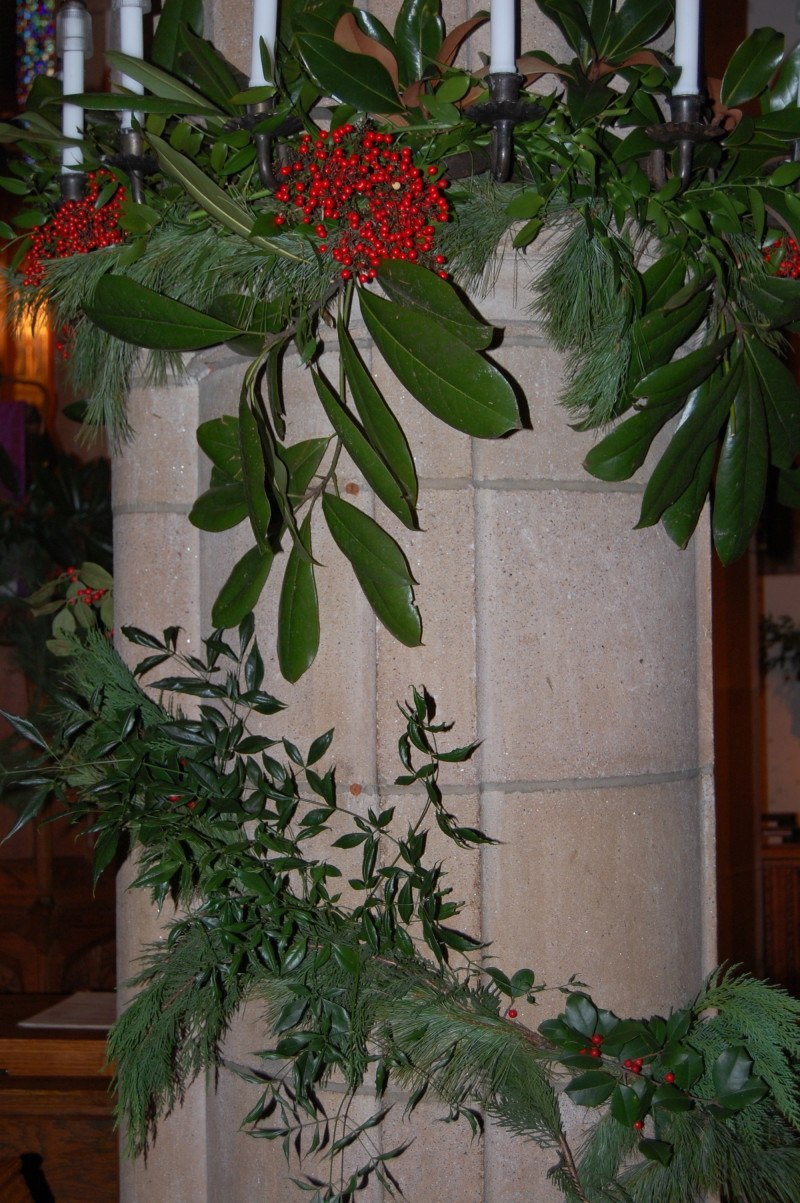HISTORIC GARDEN WEEK 2014: THE ARRANGEMENTS
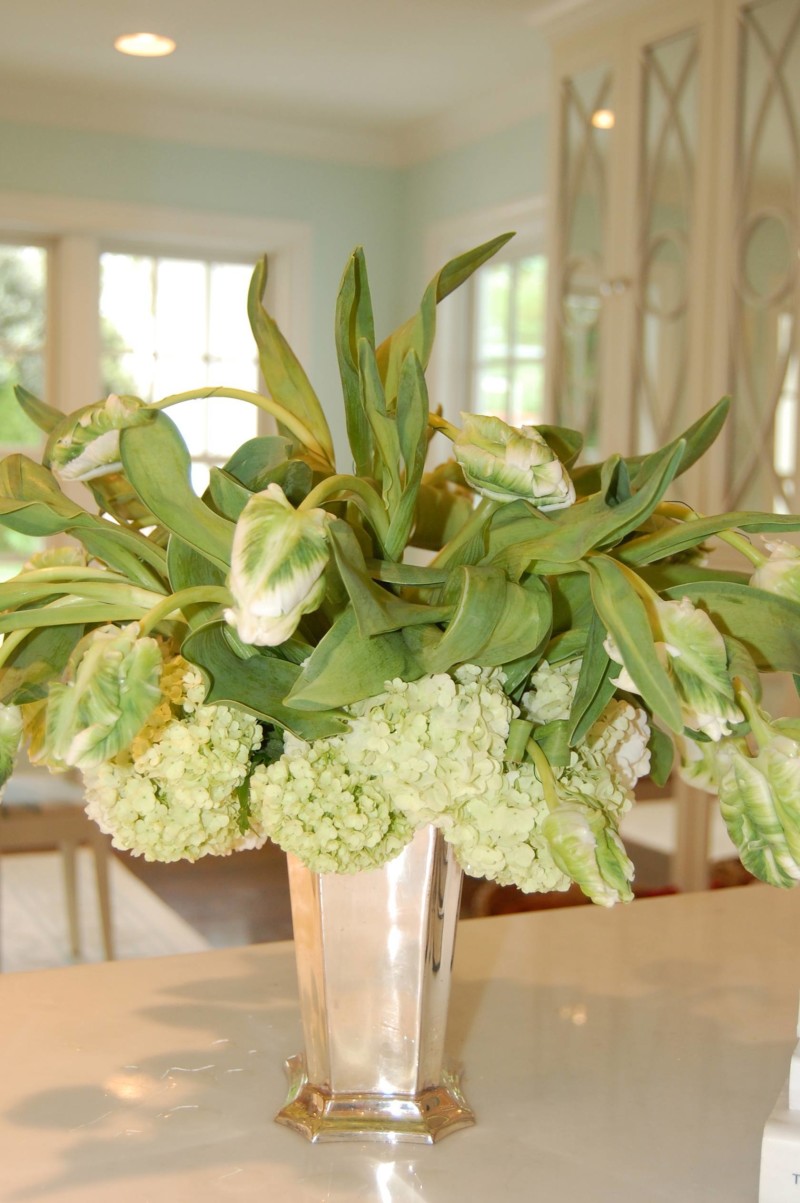
Historic Garden Week, “America’s Largest Open House” hosted annually by the Garden Club of Virginia, has raised millions of dollars to restore some of Virginia’s most treasured landmarks and gardens. The monsoon-like conditions last week did not put a damper on the festivities. In this blog, I celebrate the creativity and hard work of the women of the James River Garden Club as they gathered flowers and greens from their gardens and pulled together some pretty spectacular arrangements.
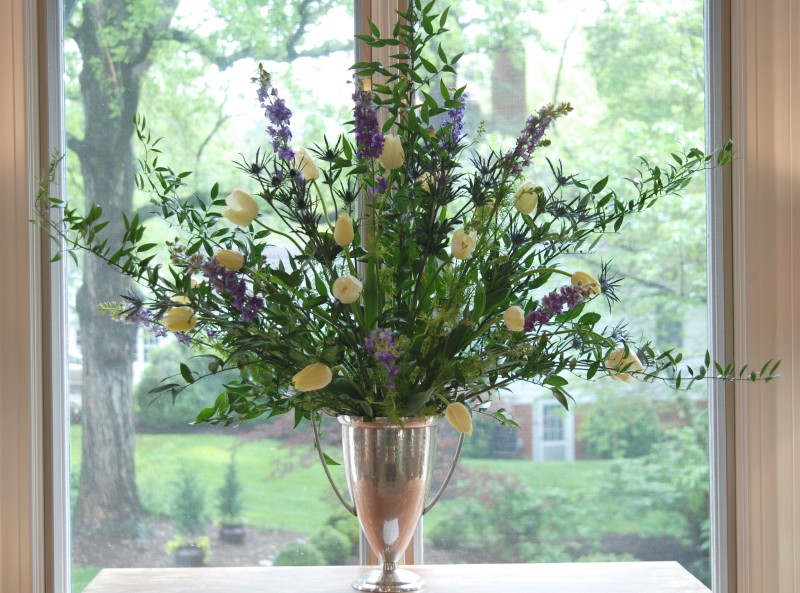
Delphinium, Tulips, Poet’s Laurel (Danae racemosa) and Sea Holly (Eryngium planum) radiate from a silver cup in the lovely home of Kristen and Barton Harris. Betsy Trow took many of the pictures (the best ones!) in the Harris home.
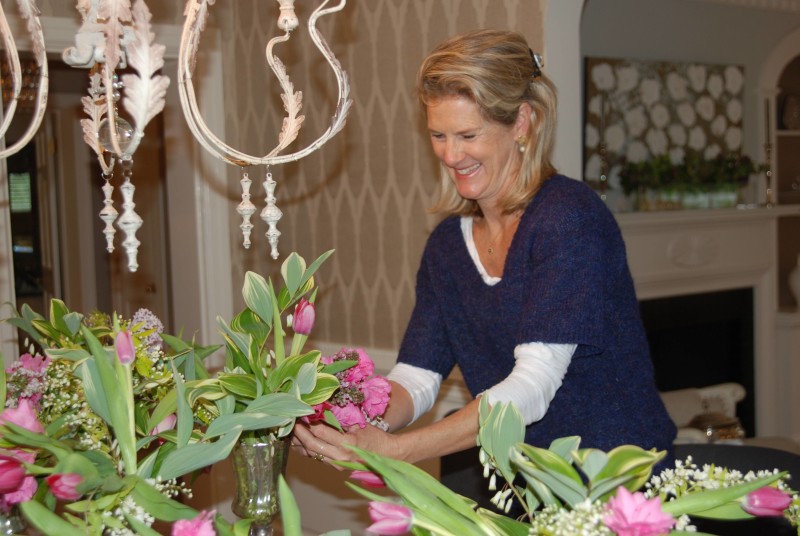
Service with a smile: Sarah Wiley works on the dining room arrangements.
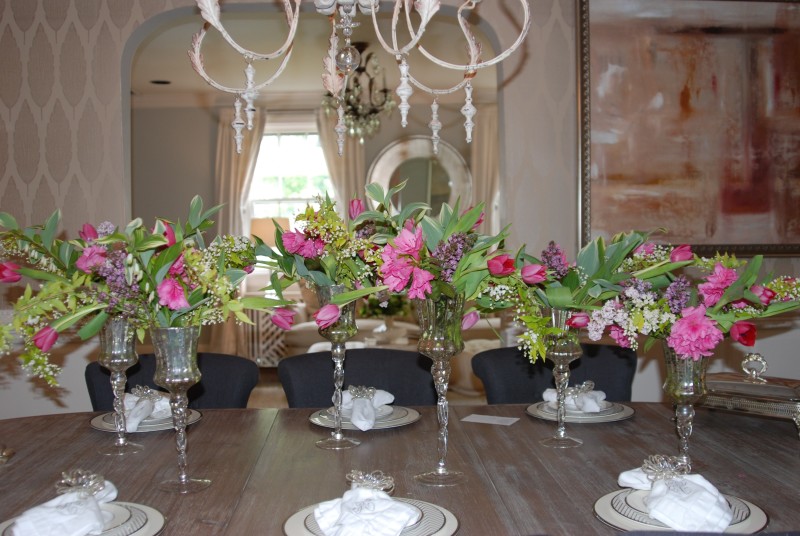
Tulips, Variegated Solomon’s Seal (Polygonatum odoratum ‘Variegatum’), Deutzia (Deutzia gracilis), Azaleas and Lilacs (Syringa vulgaris) are loosely arranged in individual goblets.
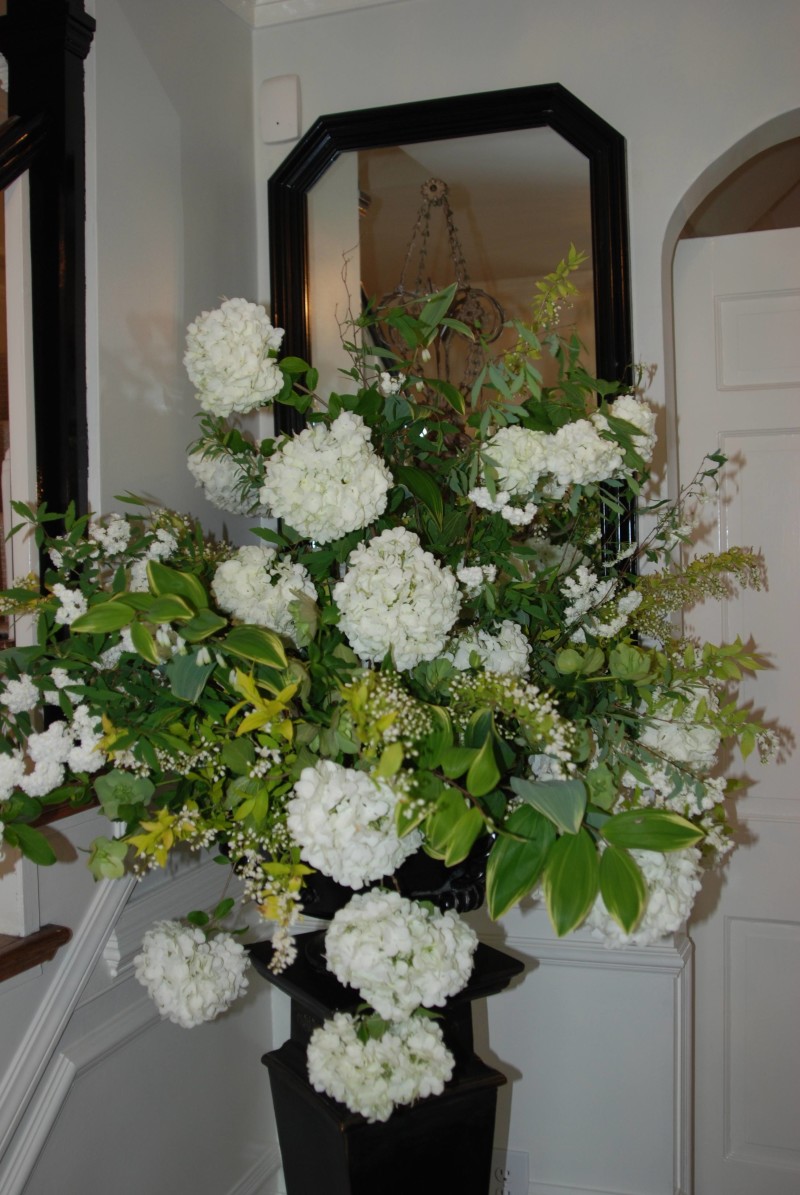
Deutzia, Variegated Solomon’s Seal, Snowball Viburnum (Viburnum macrocephalum) and Snowmound Spirea (Spiraea nipponica ‘Snowmound’) grace the front hall.
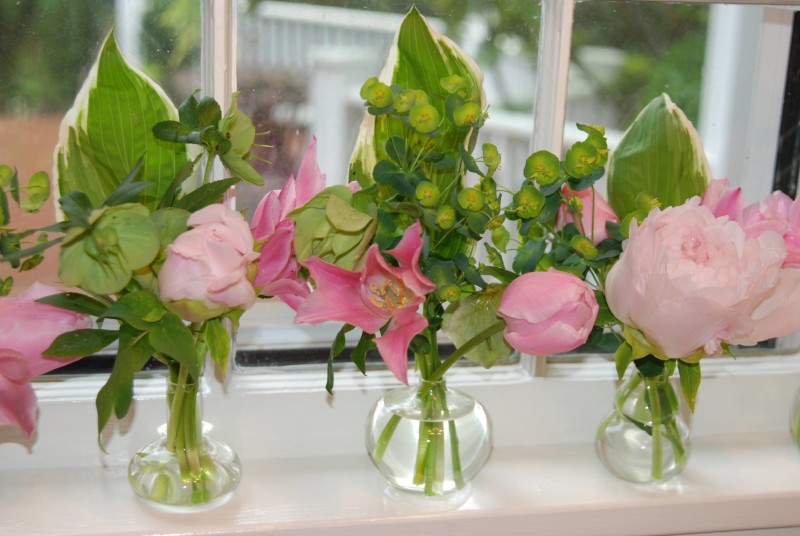
Talk about over-achieving — these tiny glass bud vases pack a big pink and green punch with pink peonies, tulips and azaleas. Wood Spurge (Euphorbia amygdaloides var. robbiae), Hosta and Lenten Rose (Helleborus orientalis) provide the preppy green counter punch.
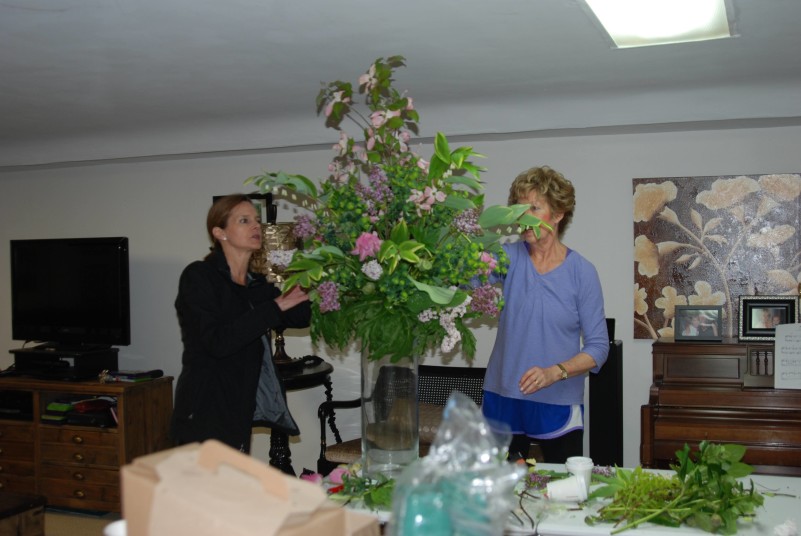
Margaret Reynolds and Inge Sen (above) put the finishing touches on an arrangement (below) containing Pink Dogwood (Cornus florida), Tulips, Lilac, Variegated Solomon’s Seal , Wood Spurge and greens.
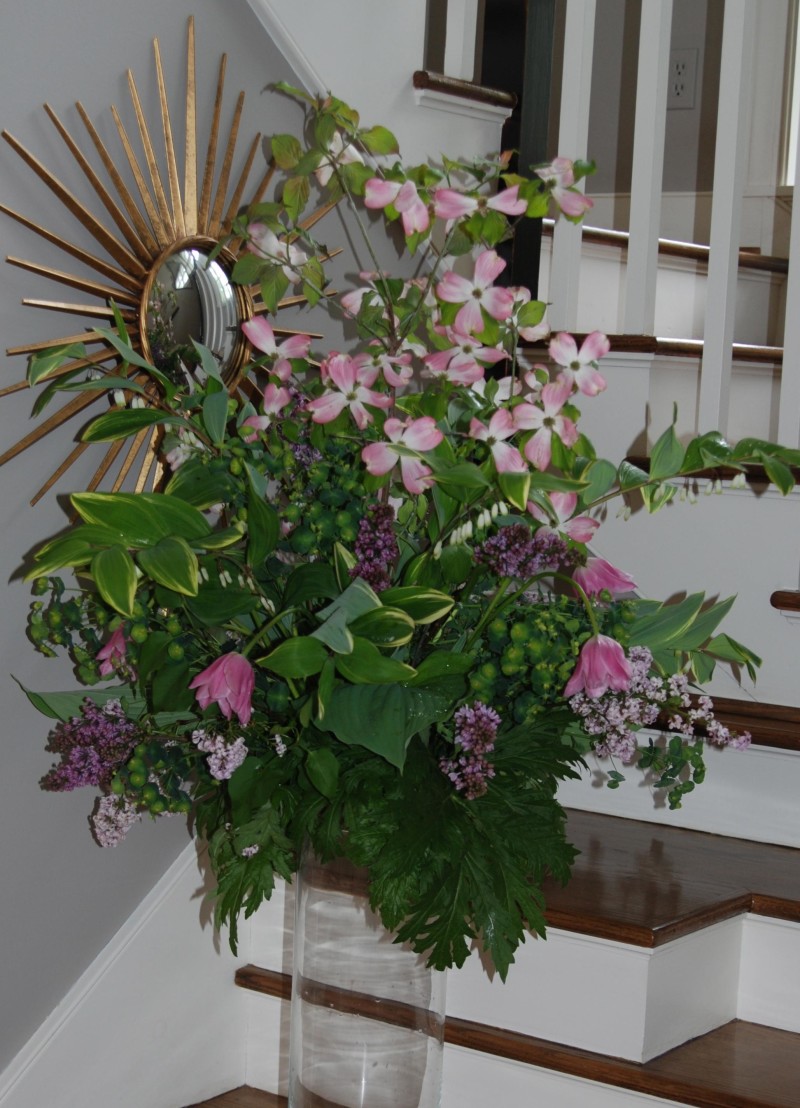
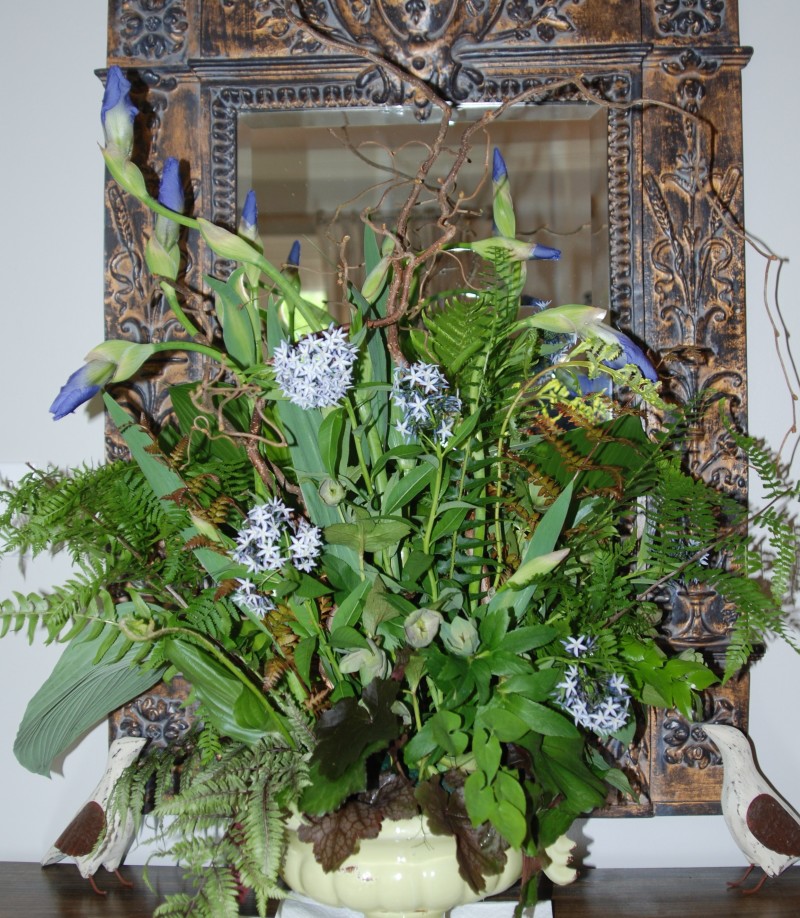
This arrangement is like a walk in a Virginia spring garden. Foliage, including Blue Hosta, Autumn Fern (Dryopteris erythrosora), Ghost Fern (Athyrium ‘Ghost’), Coral Bell leaves (Heuchera, spp.), Barrenwort (Epimedium grandiflorum), Japanese Holly Fern (Cyrtomium falcatum) and Lenten Rose (I’m sure I’m missing some!), do the heavy lifting for the blue flowers of the Amsonia (Amsonia tabernaemontana) and Bearded Iris (Iris germanica). The iris in this spectacular arrangement makes me think of Swan Lake!
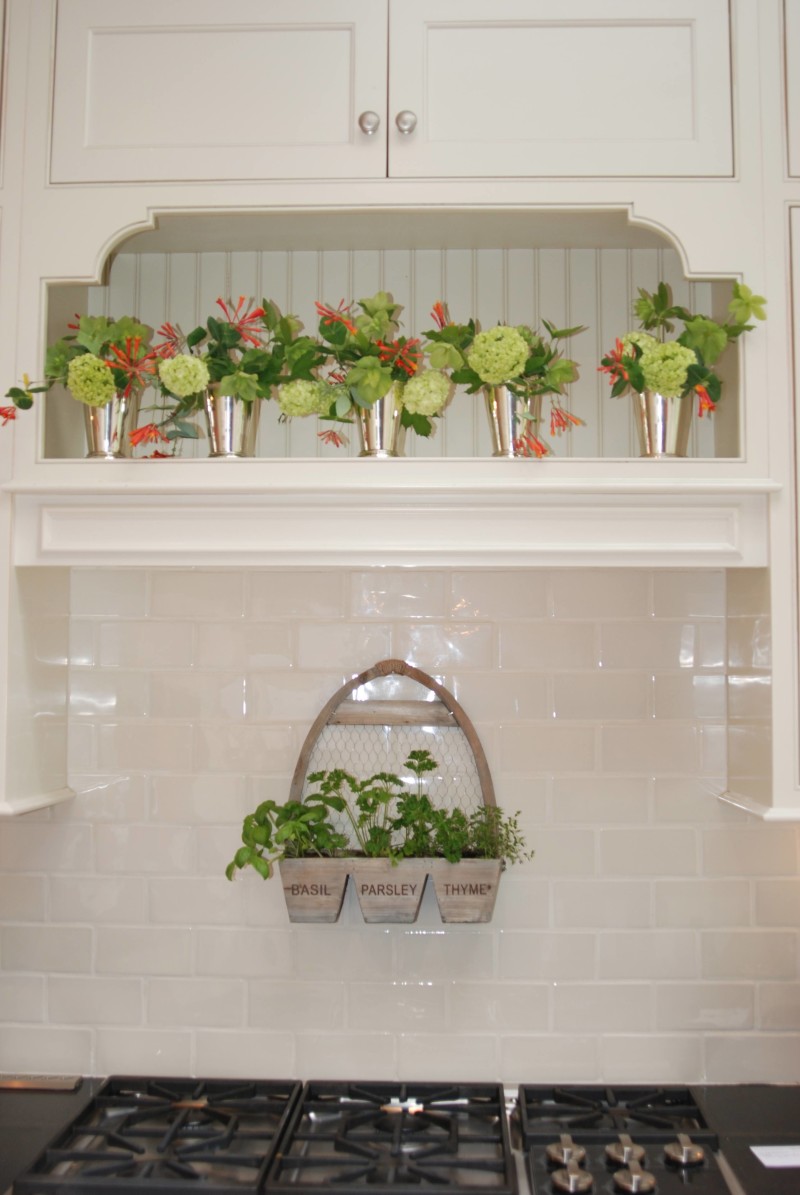
The monochromatic kitchen sparkles with the silver julep cups and the Coral Honeysuckle (Lonicera sempervirens). Snowball Viburnum (the OTHER Snowball Viburnum — Viburnum opulus roseum) and Lenten Rose provide a subtle contrast.
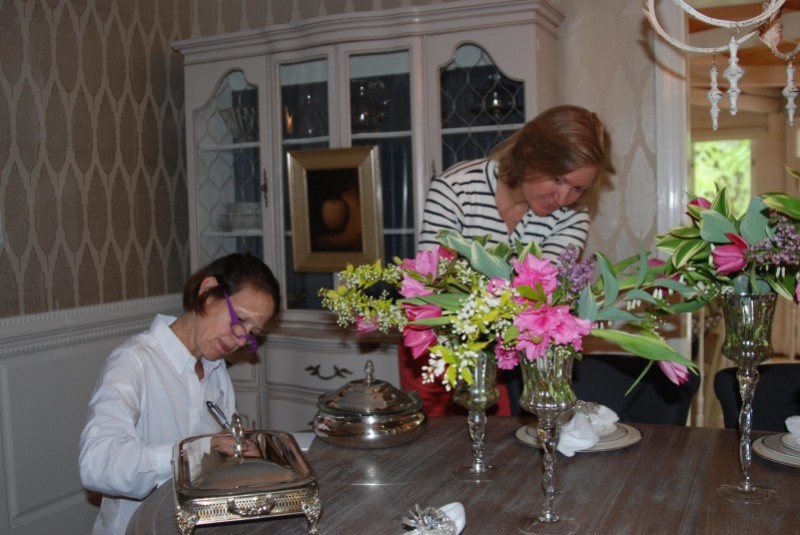
Susan Robertson and Mary Bacon identify the plants used in the arrangements.
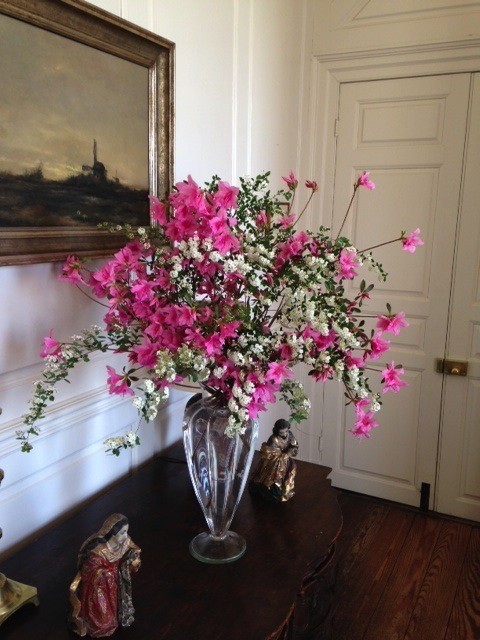 At Westover (I blogged about Westover Plantation last week), Muschi Fisher and her daughter Andrea Erda gathered Azaleas and Snowmound Spirea, above, and below, another variety of Azalea (‘George Tabor?’), with the Spirea and — I love this — a lone apricot Tulip.
At Westover (I blogged about Westover Plantation last week), Muschi Fisher and her daughter Andrea Erda gathered Azaleas and Snowmound Spirea, above, and below, another variety of Azalea (‘George Tabor?’), with the Spirea and — I love this — a lone apricot Tulip.
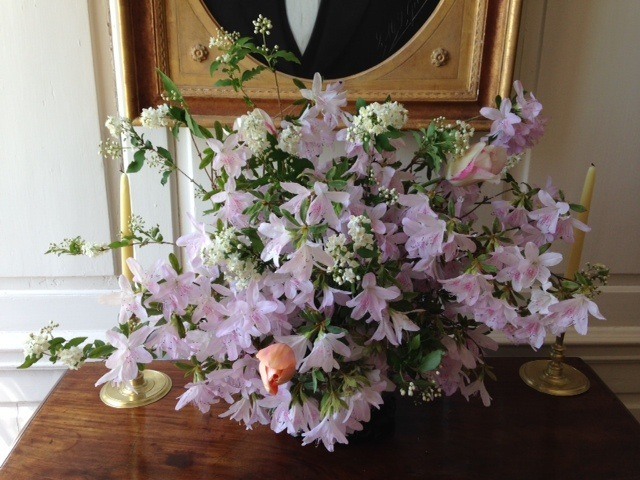
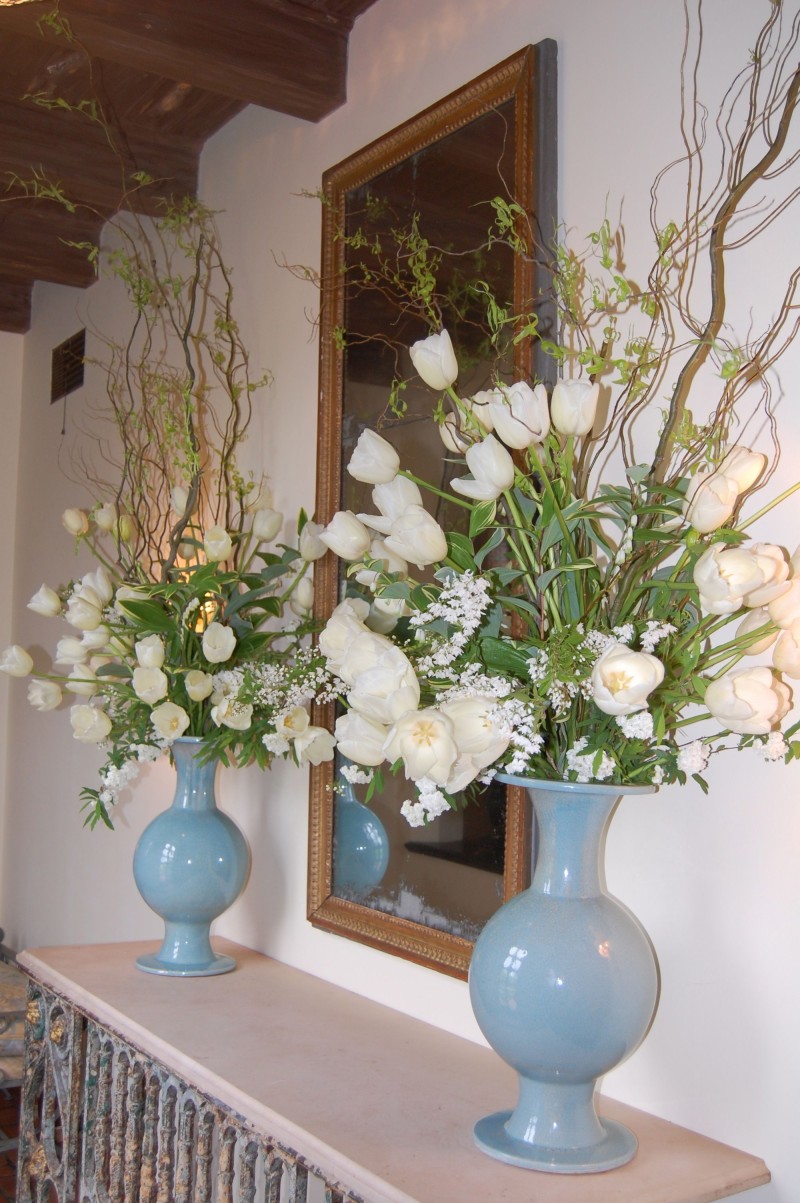
The entrance to Caroline and Gordon Wallace’s beautiful Byrd Park home was framed by twin arrangements of Tulips, Slender Deutzia, Variegated Solomon’s Seal and Willow branches. Caroline is the owner of the Caroline Travels the World. She is well known for customizing exotic and adventurous trips throughout the world for her clients.
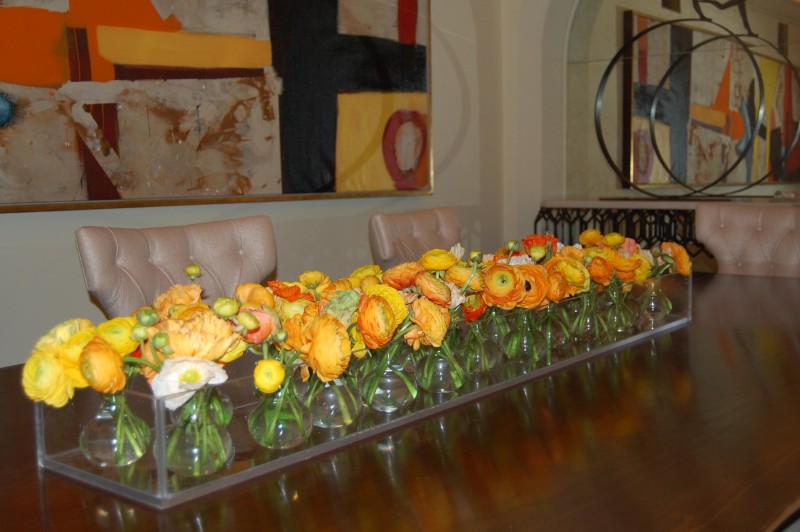
Masses of Ranunculus form a stunnning line and complement the art work in Caroline’s dining room.
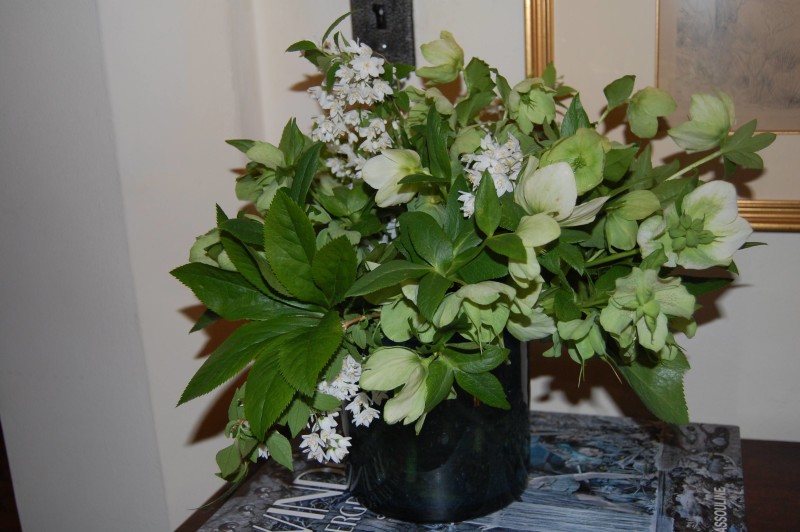
A bunch of Lenten Rose and Deutzia grace a hall table.
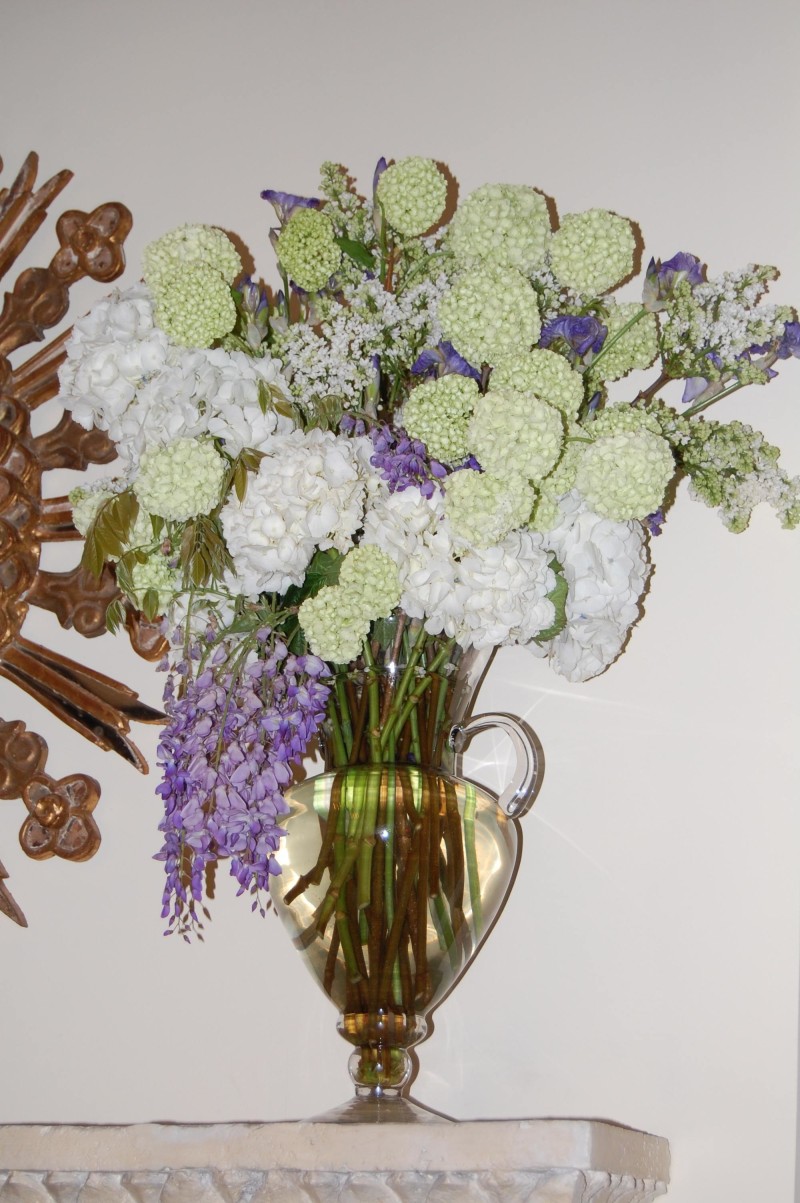
Two Snowball Viburnum are used in this arrangement: Viburnum macrocephalum (the large, white Snowball) and Viburnum opulus ‘Roseum’ (the smaller Snowball). Wisteria drapes below.
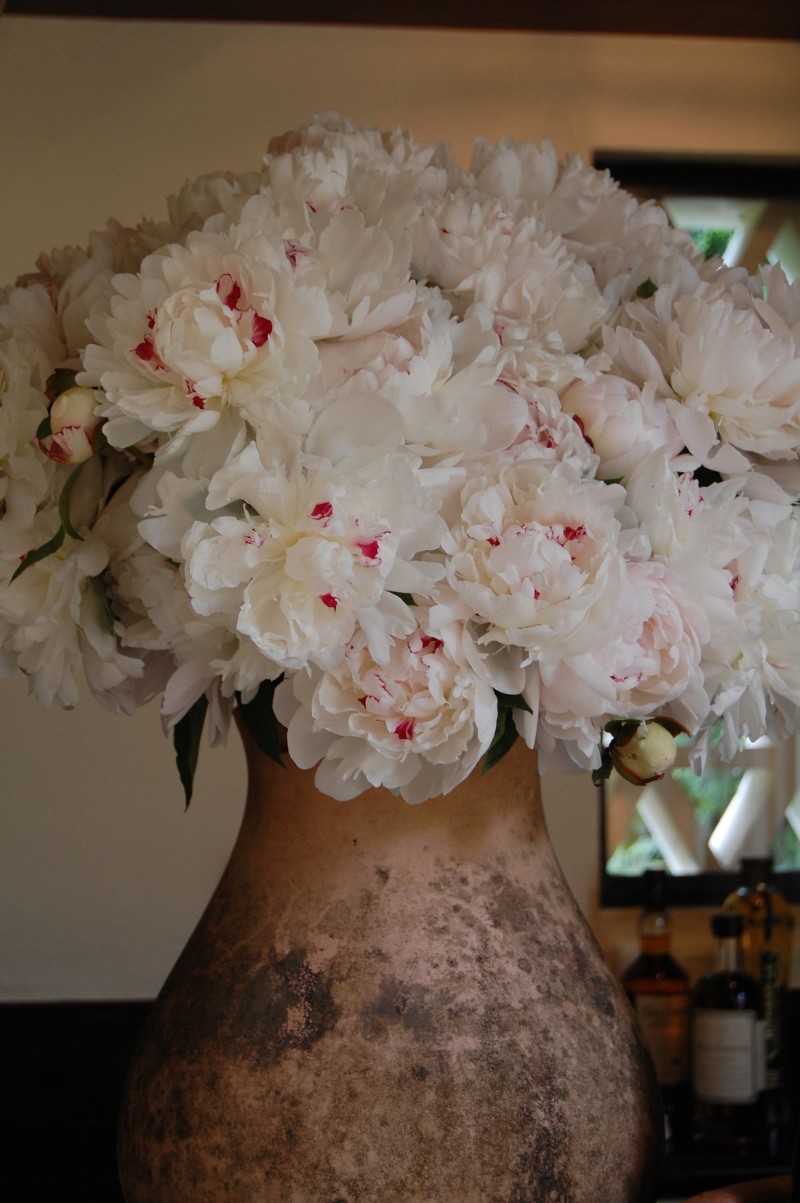
A mass of Peony (possibly ‘Festiva Maxima’?) fills this rustic container at the bar.
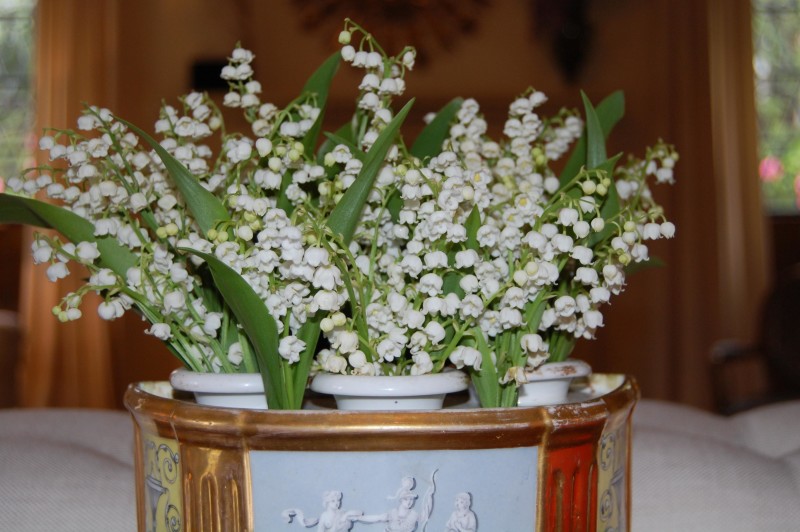
Nothing prettier than a bunch of Lily of the Valley (Convallaria majalis).
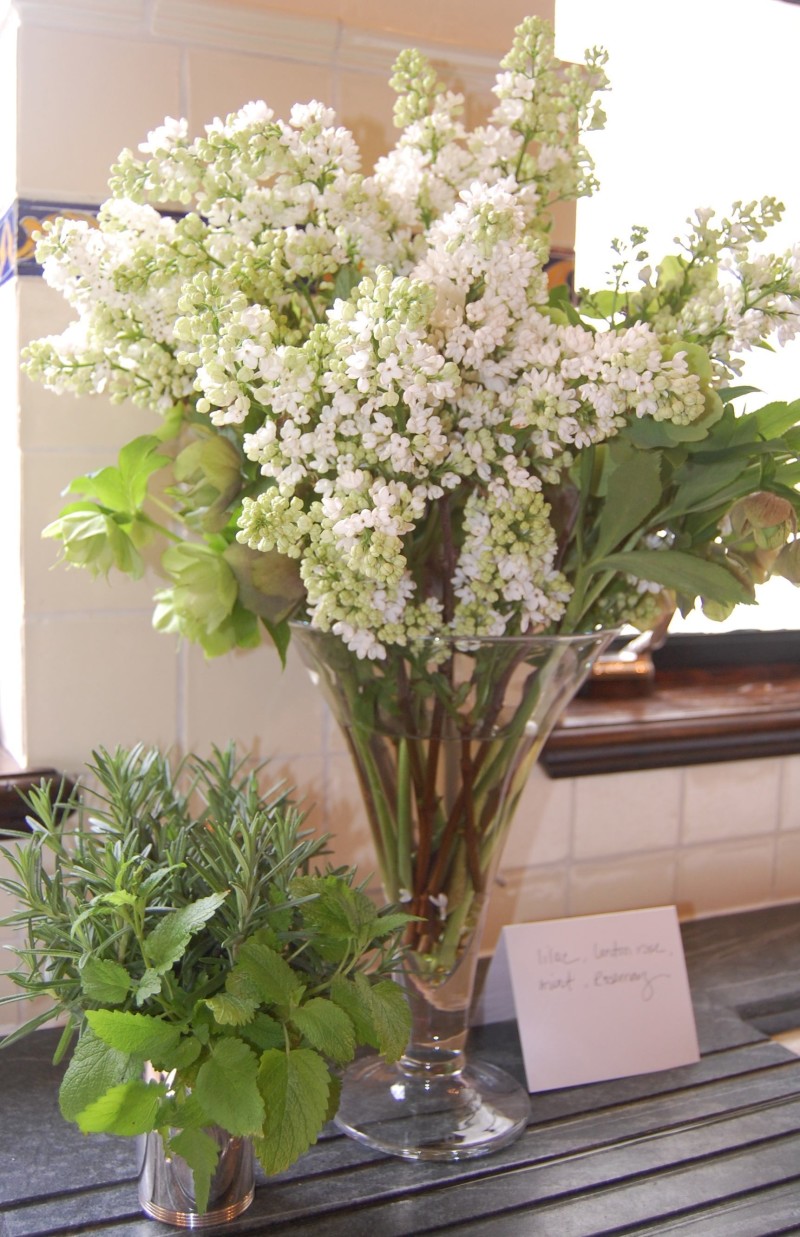
White Lilac and Lenten Rose brighten up the kitchen. Rosemary and Mint stand ready for use. Lamb for dinner?
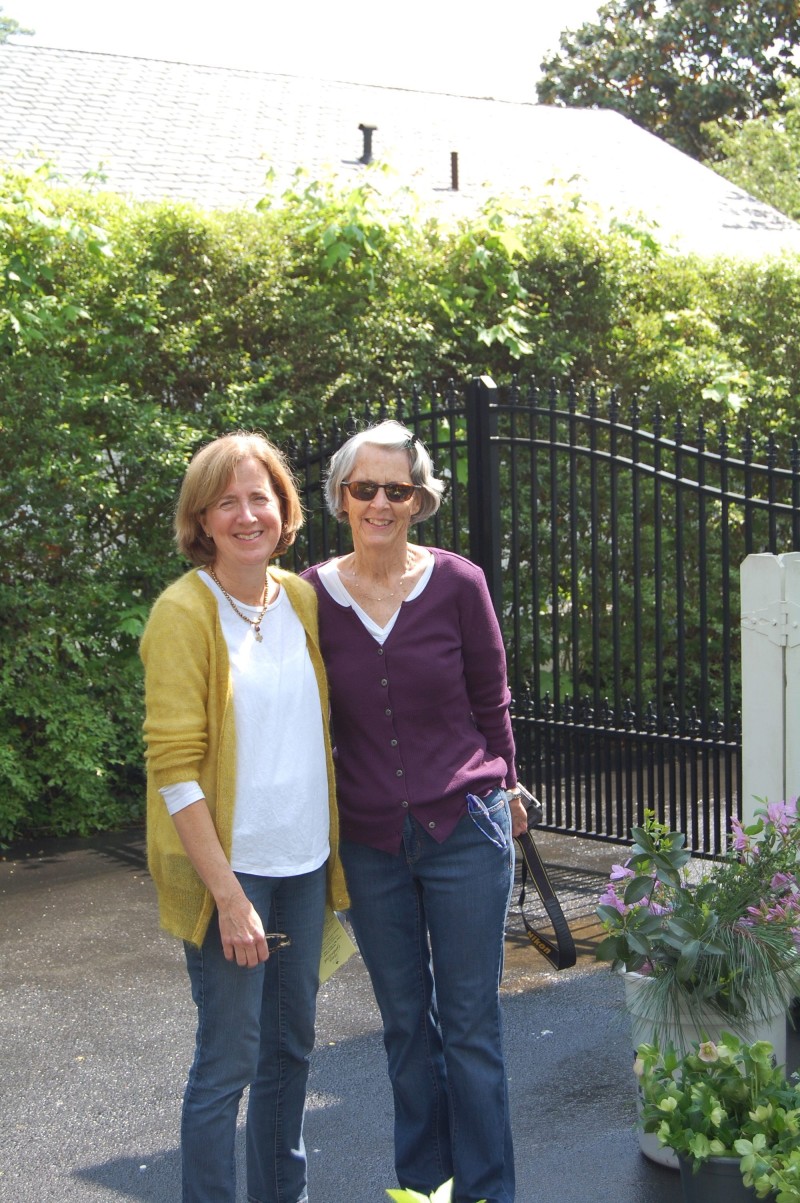
Mary Anne Burke and Betsy Trow worked non-stop to ensure a successful Garden Week tour.

Jenny Andrews’s talent as an interior designer was on display in her fresh, beautiful home. Jenny, who owns Andrews Designs, specializes in residential and resort design. In the kitchen arrangement above, Frances Williams Hosta frame Snowball Viburnum, Tulips and the tender new growth of Poet’s Laurel.
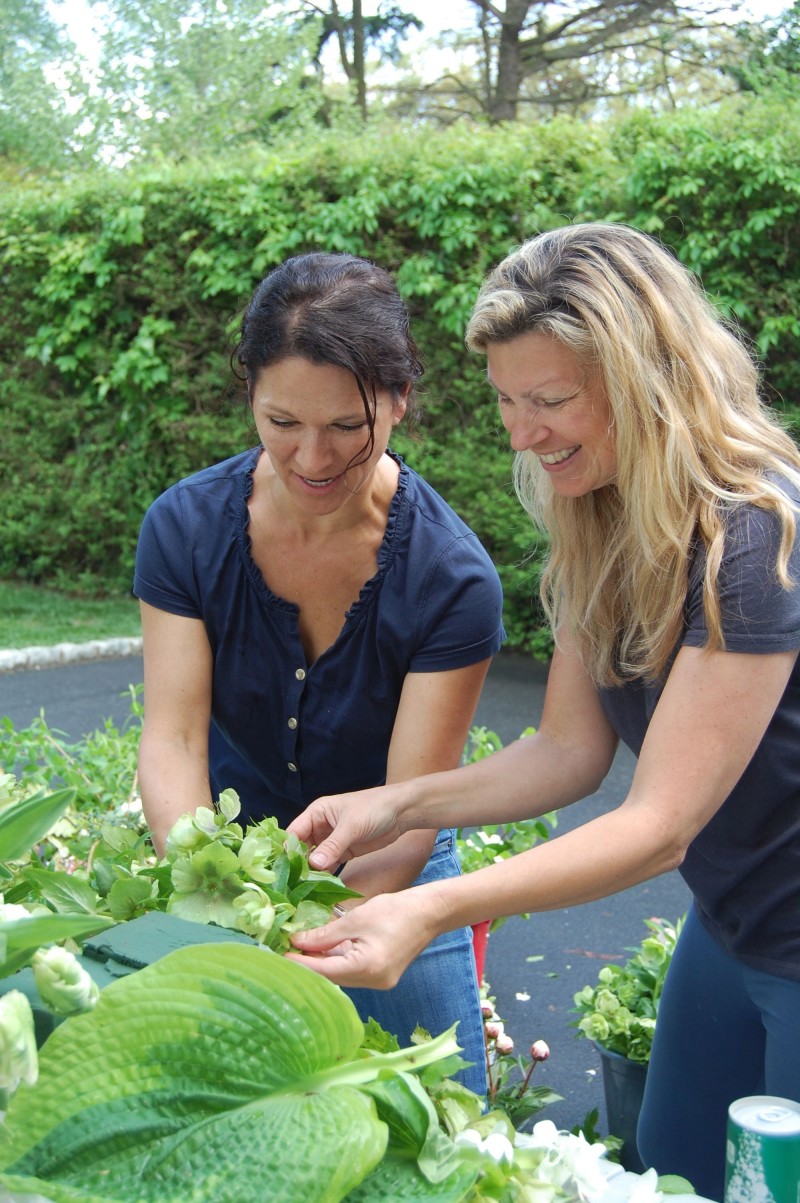
Jenny and Louise Kirby work with the Hosta and Lenten Rose cut from a neighbor’s backyard garden.

Azaleas, Snowball Viburnum, Lenten Rose and False Indigo complement the pale blue palette of the room.
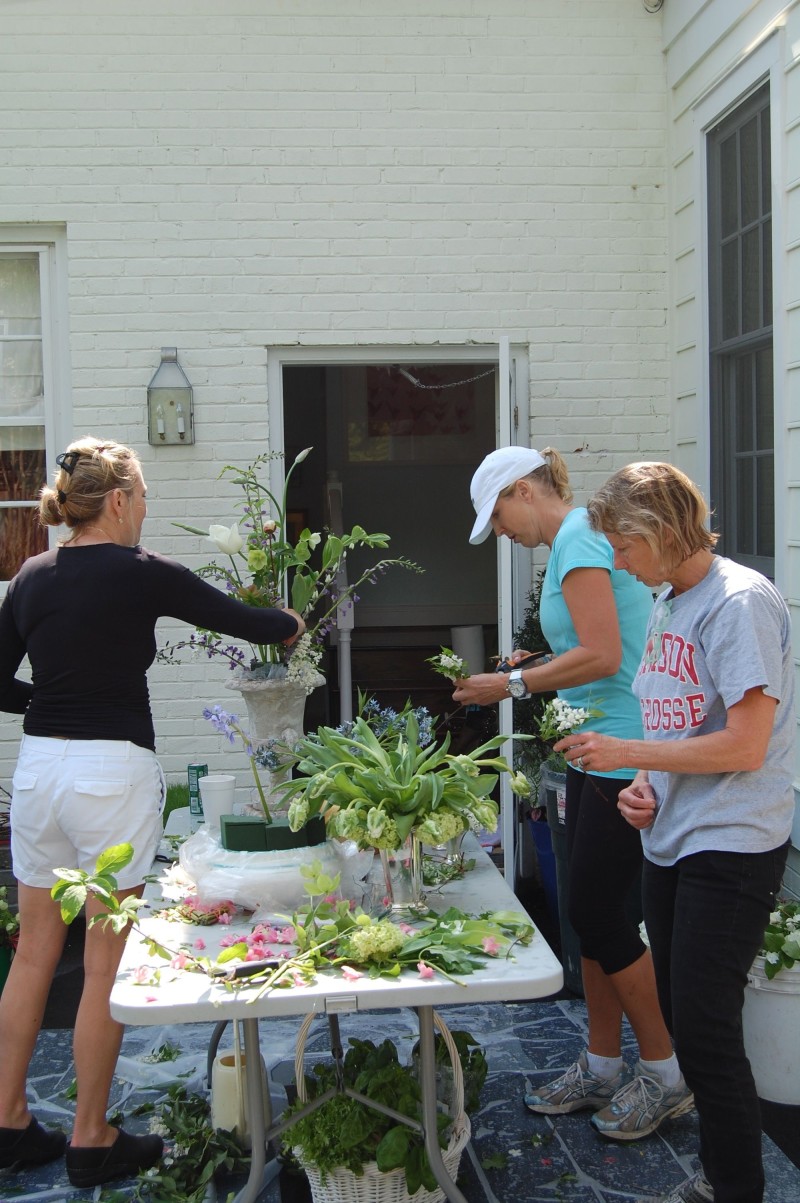
My Oak Lane buddies, Margaret Valentine, Jennie Gumenick and Margy Brown, work together like a well-oiled machine.
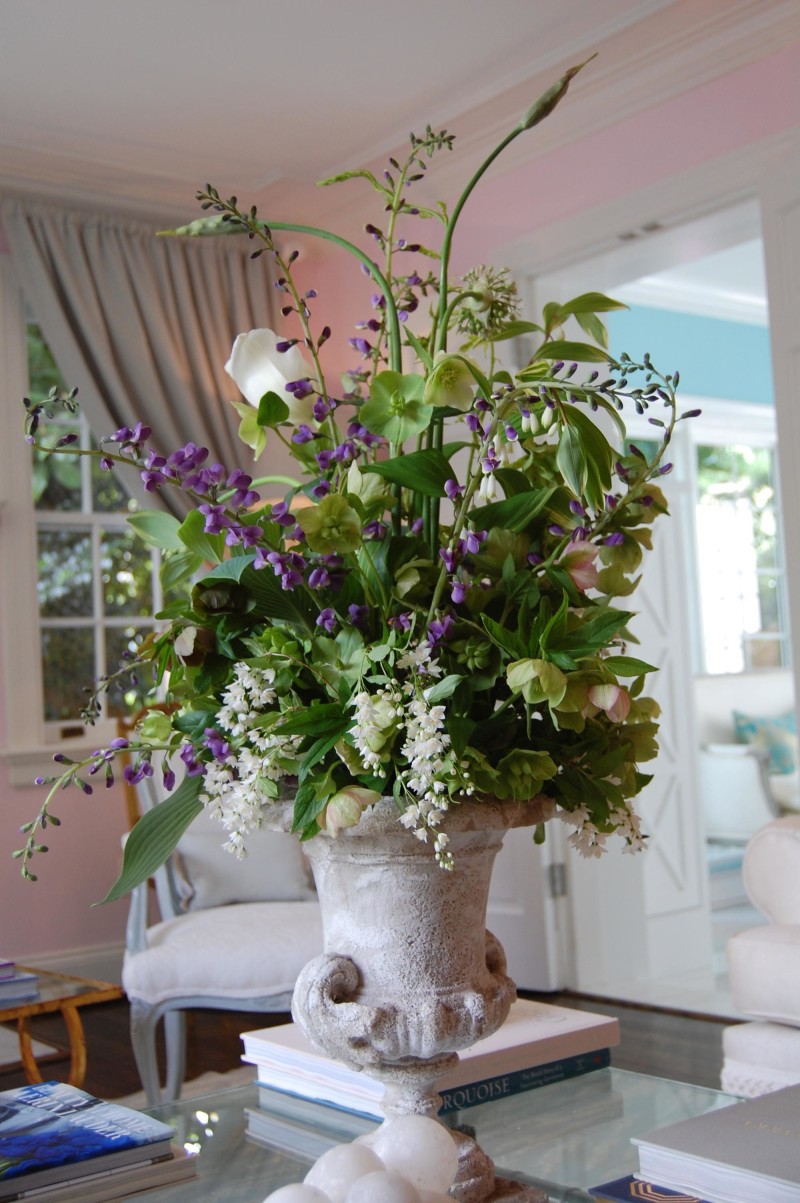
The picture doesn’t do this gorgeous arrangement justice. Deutzia, False Indigo, Allium still in bud, Lenten Rose and Variegated Solomon’s Seal cascade out of the classical cast stone urn.
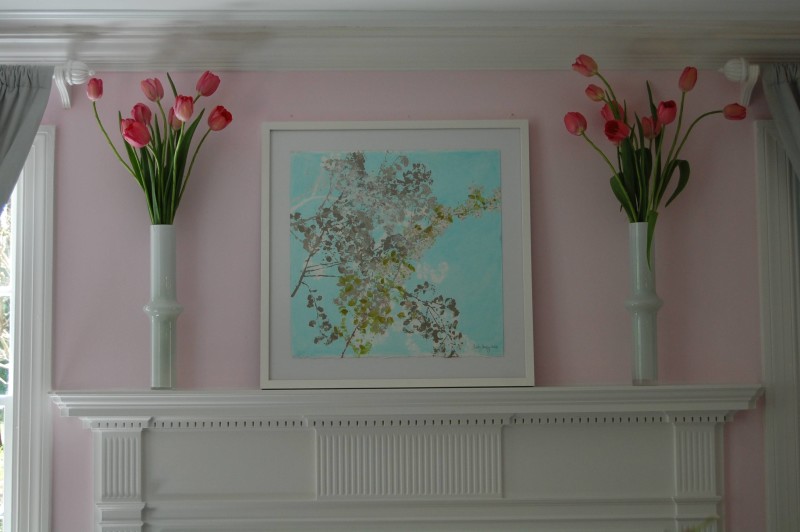
Pink tulips frame a beautiful painting by talented artist Tenley Beazley.

Less is more in this arrangement of apricot Tulips and Spanish Bluebells (Hyacinthoides hispanicus).
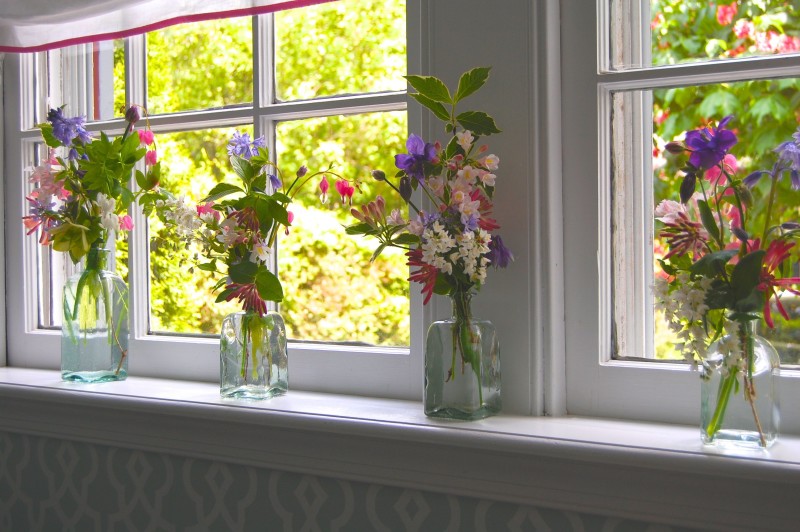
These sweet little bouquets, containing Azaleas, Bleeding Heart, Spanish Bluebells, Deutzia, Variegated Weigelia leaves and Coral Honeysuckle, spice up the bathroom windowsill.
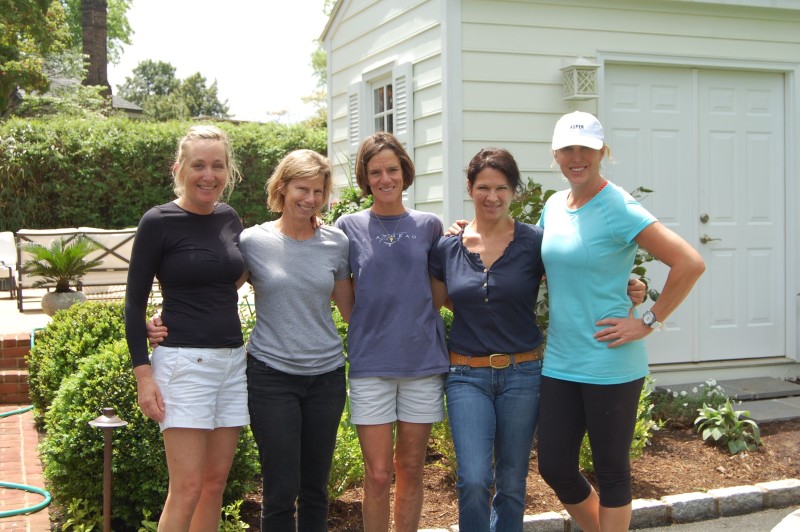
Having raided the neighbors’ yards for plant material and filled Jenny’s home with the fruits of their labor, the girls from the Hood call it a day. Pictured, from left, Margaret Valentine, Margy Brown, Ida Farinholt, Louise Kirby and Jennie Gumenick.



